WHAT IS THE ENVIRONMENTAL IMPACT ROCKETS HAVE ON OUR AIR?
Video by Tim Dodd, web version by Florian Kordina and Andy Law
Or more simply, how much do rockets pollute?
It is hard to argue that rockets are not incredible pieces of machinery. Forget the fact that they are the only way humans can currently put anything meaningful into orbit, but seeing and hearing a rocket launch is simply put just incredible and truly an unforgettable experience.
But as awesome as those flames and sounds are, what is not awesome is thinking about how much a single rocket pollutes.
Some might find it ironic that an organization like NASA, who studies our atmosphere, is Ok with rockets polluting it so much. Or isn’t it weird that Elon Musk, the same person who is pushing sustainable energy with Tesla, also has a rocket company that runs on fossil fuels?
And let’s not forget about Jeff Bezos, who just pledged 10 billion dollars to help combat climate change, and who will soon be frequently launching a rocket almost the size of the Saturn V moon rocket! Isn’t this all a little bit hypocritical?
So today we are going to do a deep dive into this. We are going to see just how much of what rockets emit, go over how much different fuels and engine types pollute, then we will compare their emissions against other forms of transportation and other global polluters.
And we will even figure out what would happen if SpaceX’s proposed Starship point to point transportation would replace airliners, would that be an improvement in emissions, or a step backwards?
But that is not the only environmental impact rockets have. What about when parts are thrown away in the oceans or on land? What impact does that have? Or what about space debris? Do we need to worry about how much junk we are putting in space? We will get to those questions in upcoming articles, but for now, we are just going to focus on air.
By the end of this article we will hopefully have a healthy understanding of the environmental impact rockets have on our atmosphere, we will figure out whether or not rockets’ impact is reckless, or if it is really not that big of a deal. Lastly, we will look at the things the aerospace industry is doing to improve the environmental impact of rockets.
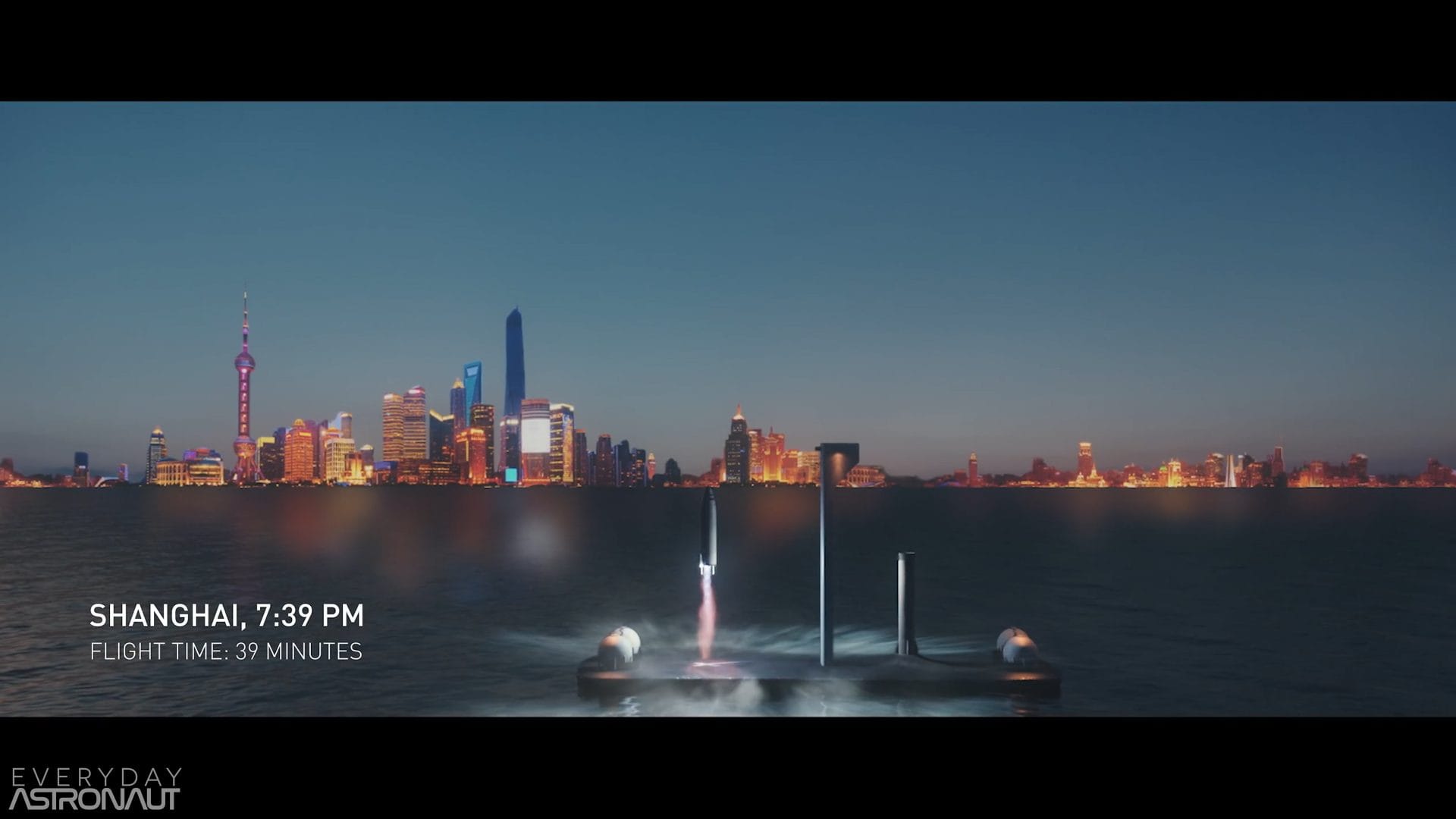
How much do rockets pollute? This is a question I get asked all the time and quite frankly, it is a fantastic question. There are a lot of really misleading articles that are barely skimming the surface and do not provide context or actual hard numbers.
So I figured it is time we get down to the bottom of this and really figure out how big of a deal the emissions of rocket launches actually are.
So I have spent about 5 months really trying to gather as much information as I can. I hired a researcher, Lisa Stojanovski, to help do some additional research while I continued to study up on the subject. I mean, as far as I am from a rocket scientist, I am even further away from a client scientist.
But now I have spoken with experts, I have read research paper after research paper, and am constantly having to update this script because I keep learning things almost every day! So this is a really really deep, complicated, nuanced, but really interesting topic! So stick with me, because it is actually quite fascinating!
But right off the bat, let’s address one thing. I am no doubt opening up a massive can of internet worms here, but hear me out! We are just going to go over lots of numbers and compare them to other numbers, to help shape your knowledge and form your own opinion.
I know somehow climate change and pollution has become a political topic I guess, which does not really make any sense to me, but with that in mind, regardless of what you think about words like greenhouse gases, climate change and CO2, let’s all agree, we probably do not want to live on a planet that is horrendously polluted and we literally cannot live on a world that is inhospitable to life.
So with that in mind, let’s please keep the comments section clear of pointless internet arguments over climate change and politics and that kind of stuff, and just look at the raw numbers here and use these to shape our knowledge on the impact rockets have on our planet.
And this article is mostly going to focus on what actually comes out of the flamey end of a rocket, and we will kinda gloss over manufacturing, transport, ground operations etc., not to ignore them and act like they do not matter, but because that would turn an already insanely long article into the longest article ever.
This article will be a rollercoaster of good and bad. You will be shocked at “oh that is not that bad, but OH THAT IS REALLY BAD” and back to “Oh, that is nothing” over and over. So there are tons and tons of side notes and interesting little tidbits here. We will be going to tangent town in this article, sorry, not sorry.
So get a drink, a notepad and your periodic tables ready, because we have got lots of science to talk about.
WHAT ACTUALLY COMES OUT THE FLAMEY END OF A ROCKET?
So to start off, let’s make one thing clear. Humans will not be abandoning traditional rockets any time too soon. There just simply is no other form of propulsion feasible with our current technology.
As much as I want to believe in anti-gravity warp drive magnetic super thrusters that my comment section is constantly telling me about, until the lizard overlords bless us with access to those things, rockets are the only real solution.
After all, rockets are simply machines whose sole purpose is to extract as much kinetic energy out of chemical bonds as possible. And just look at a rocket launch, there is an unbelievable amount of energy involved.
Ok, first things first, we actually have something to take into consideration. Notice when a rocket is taking off, this giant white cloud of smoke it leaves behind. That looks pretty nasty, right? And then watch as the rocket ascends, that cloud does not follow, the exhaust will begin looking much more clear very quickly. What is going on here?
Well, luckily, that giant cloud of white smoke on the launch pad is not actually smoke at all, it is almost entirely a giant cloud of steam. That is because many rockets and their launch pads utilize a water deluge/sound suppression system to not only keep the launch pad intact, but also dampen the sound energy of the vehicle so it does not damage itself!
By dumping over a million liters (300,000 gallons) of water during the launch sequence, most of that water is vaporized and turned into steam, and in doing so, it absorbs a lot of energy with it. So you will notice that many rockets, when they clear the pad, no longer have that thick white cloud following them. Although some still do – more on that later.
Next, I am going to list basically everything that can come out of the flamey end of a rocket. We will then organize and classify them. Then we will show which rockets’ engines produce what, and wrap it all up by showing how much of what each vehicle systems produce, based on their engines and size.
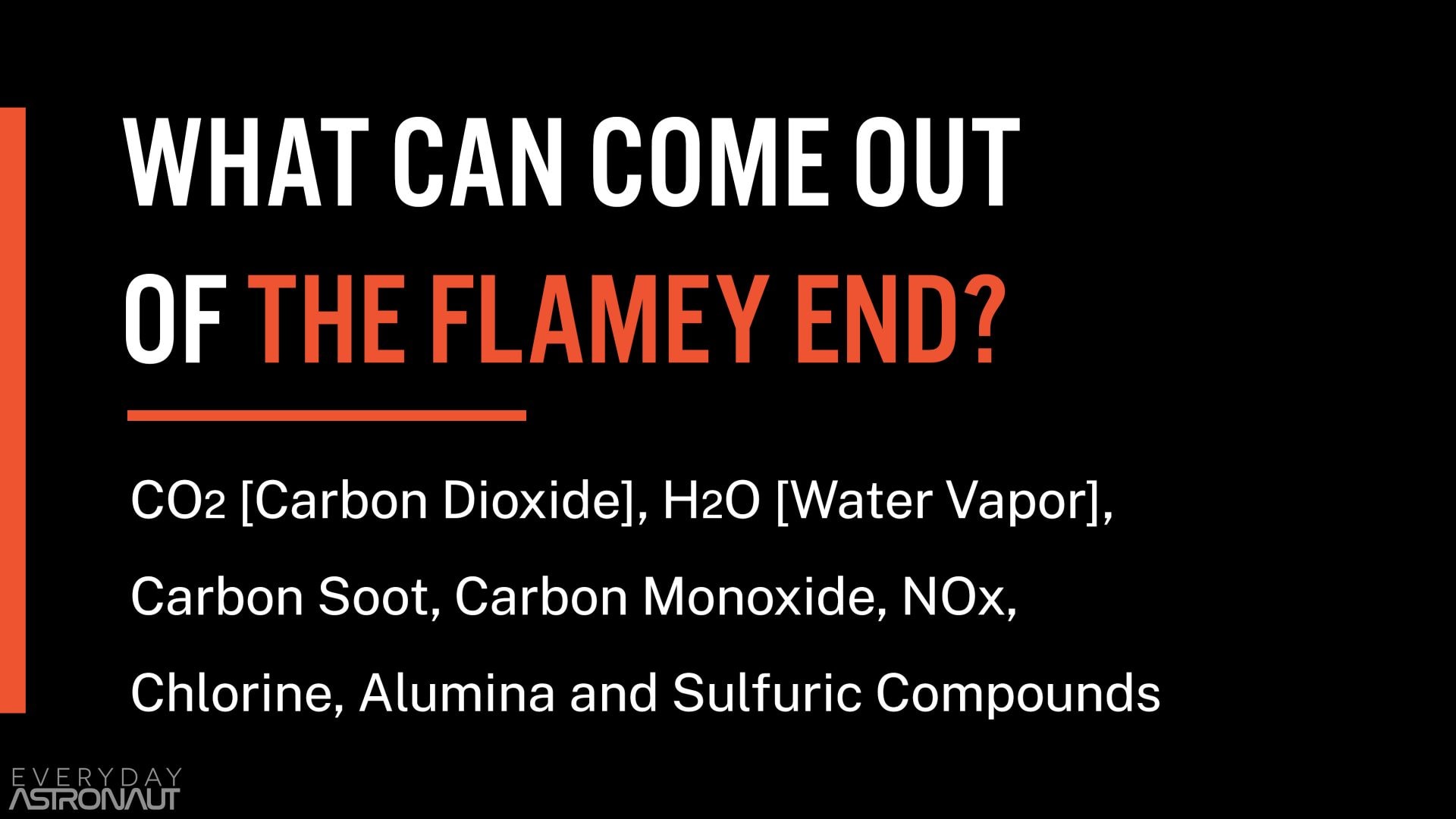
Rockets can produce many different emissions. But here is the list of usual suspects: CO2, water vapor, carbon soot, carbon monoxide (which pretty much will all bond and become carbon dioxide), NOx, chlorine, alumina and sulfuric compounds.
There are other trace gases that are literally insignificant compared to the main ones, therefore we will really just focus on these primary ones instead of getting into the littlest trace gases.
Out of these gases, the US’s environmental protection agency, or EPA, considers nitrogen oxides, sulfur oxides and carbon monoxides as pollutants. Think of the bad stuff that comes out of cars, or think of smog in a city.
Chlorine, alumina and nitrogen oxides can destroy ozone and are therefore considered ozone-depleting substances or ODS, and have been very heavily monitored and restricted since 1996.
CO2, nitrogen oxides, soot and water vapor are greenhouse gases, or act as one, since soot is not a gas. These are elements that absorb more heat than the current equilibrium of our atmosphere. This is called radiative forcing and we will get more into that later.
But simply put, if there is more of these substances in our atmosphere, our atmosphere will have the ability to trap more heat from the sun, it is just that simple.
Chlorine is considered a hazardous air pollutant by the EPA. Furthermore, sulfuric compounds and nitrogen oxides can cause acid rain and is really bad for marine life, trees, and anything living.
WHAT DO DIFFERENT ROCKETS EMIT?
So now, which rocket fuels produce what emissions? Let’s compare RP-1, hydrogen, methane, solid rocket fuel and even hydrazine-based hypergolic fuels. Going over these will pretty much cover the vast majority of rockets and what fuels they use.
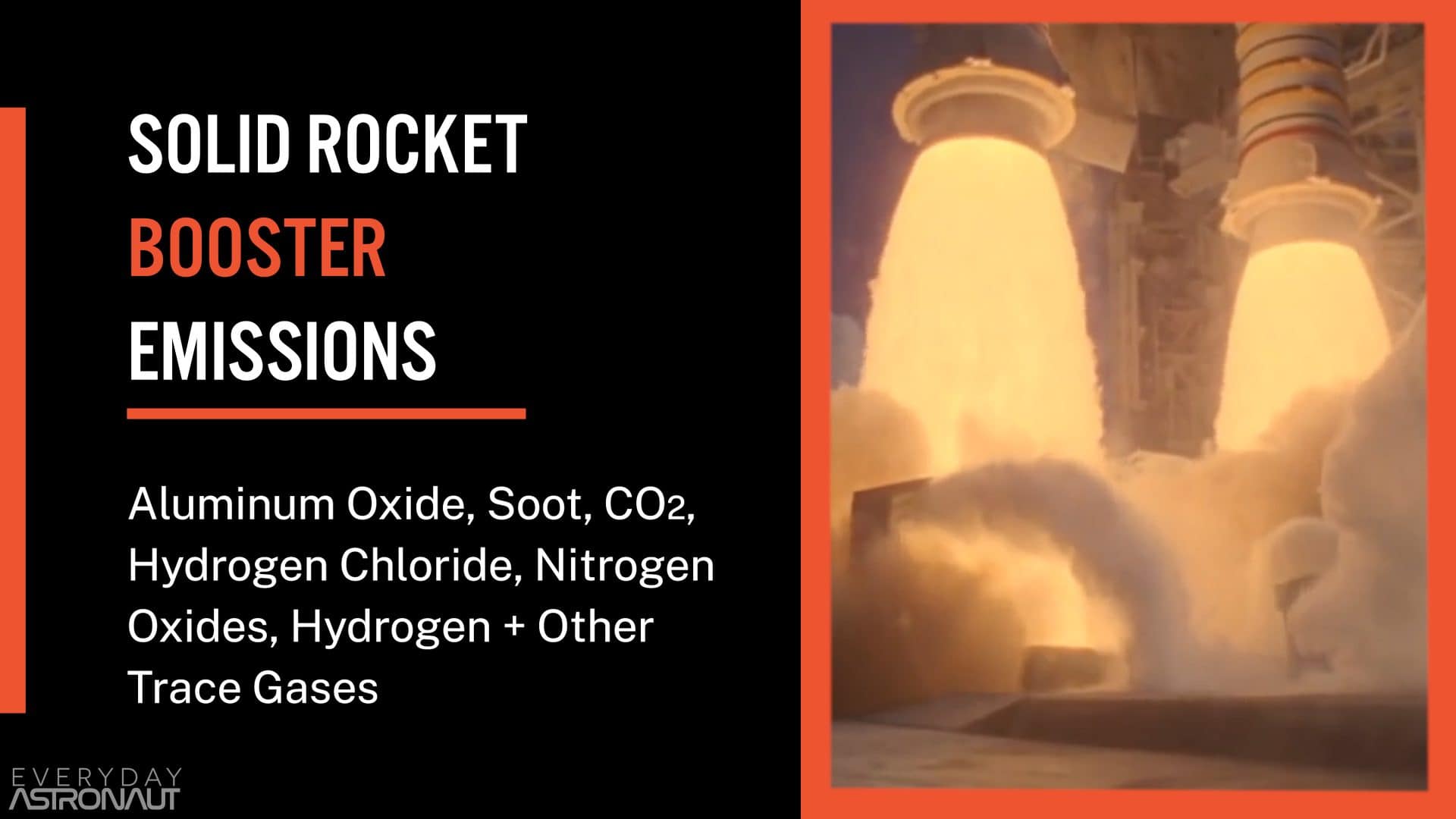
Let’s start off with the dirtiest of rocket propulsion, and that is solid rocket boosters. You will typically see solid rocket boosters on the first stage of rockets where high thrust really matters. Perhaps the most famous solid rocket boosters were the two giant white boosters on the sides of the Space Shuttle. They produced over 85% of the thrust of the rocket at take off!
There is also two massive and mighty solid rocket boosters on ESA’s Ariane 5. These huge solid rocket boosters cause the rocket to leap off the pad in a real hurry! You will also see SRBs attached to the first stage of many rockets for a little extra oomph.
Solid rocket boosters are typically composed of hydrochloric acid, or more specifically ammonium perchlorate, the salt of perchloric acid and ammonia, which are powerful oxidizers, and aluminum or magnesium powders!
These are held together by a binder, usually hydroxyl terminated polybutadiene (known as HTPB) or polybutadiene acrylonitrile (known as PBAN). Which makes the propellant into a rubbery like mixture.
This means they emit primarily aluminum oxide, soot or black carbon, CO2, hydrogen chloride, nitrogen oxides, hydrogen and a few other trace gases.
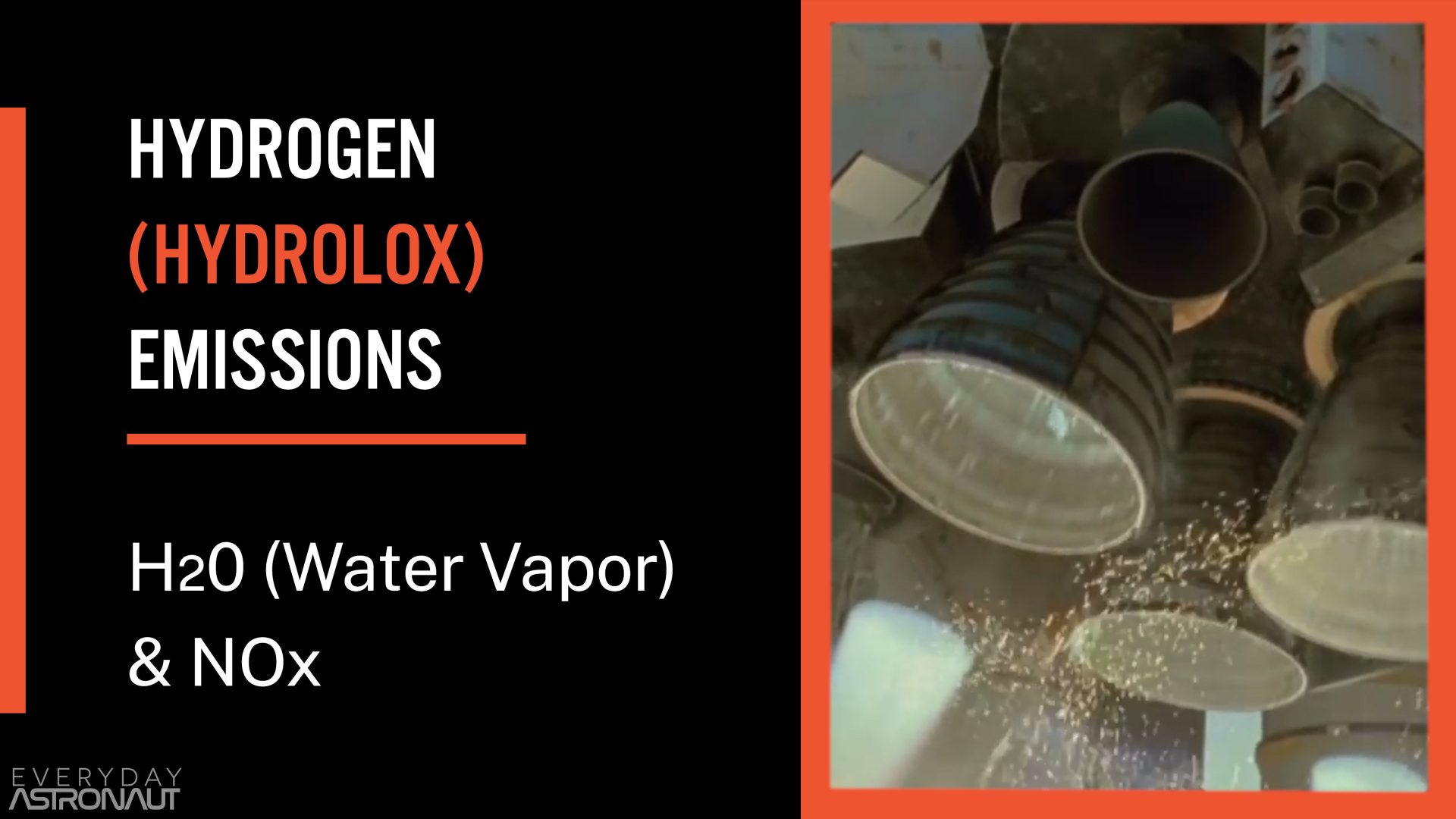
Since we mentioned the Space Shuttle, let’s look at its main engines, the RS-25, which ran on hydrogen or more specifically hydrogen and liquid oxygen or just hydrolox. The Delta IV, Ariane V’s core engine, and the centaur upper stage also run on hydrogen.
Hydrogen is perhaps the cleanest burning fuel. When you burn hydrogen with oxygen, you literally just get water vapor.
But there is a trace amount of nitrogen oxides aka NOx while the vehicle is in the lower atmosphere otherwise known as the troposphere as an after-burning effect of the hot flame coming in contact with the air. Literally all rocket engines will do this to a certain degree when in our troposphere, which is primarily composed of nitrogen.
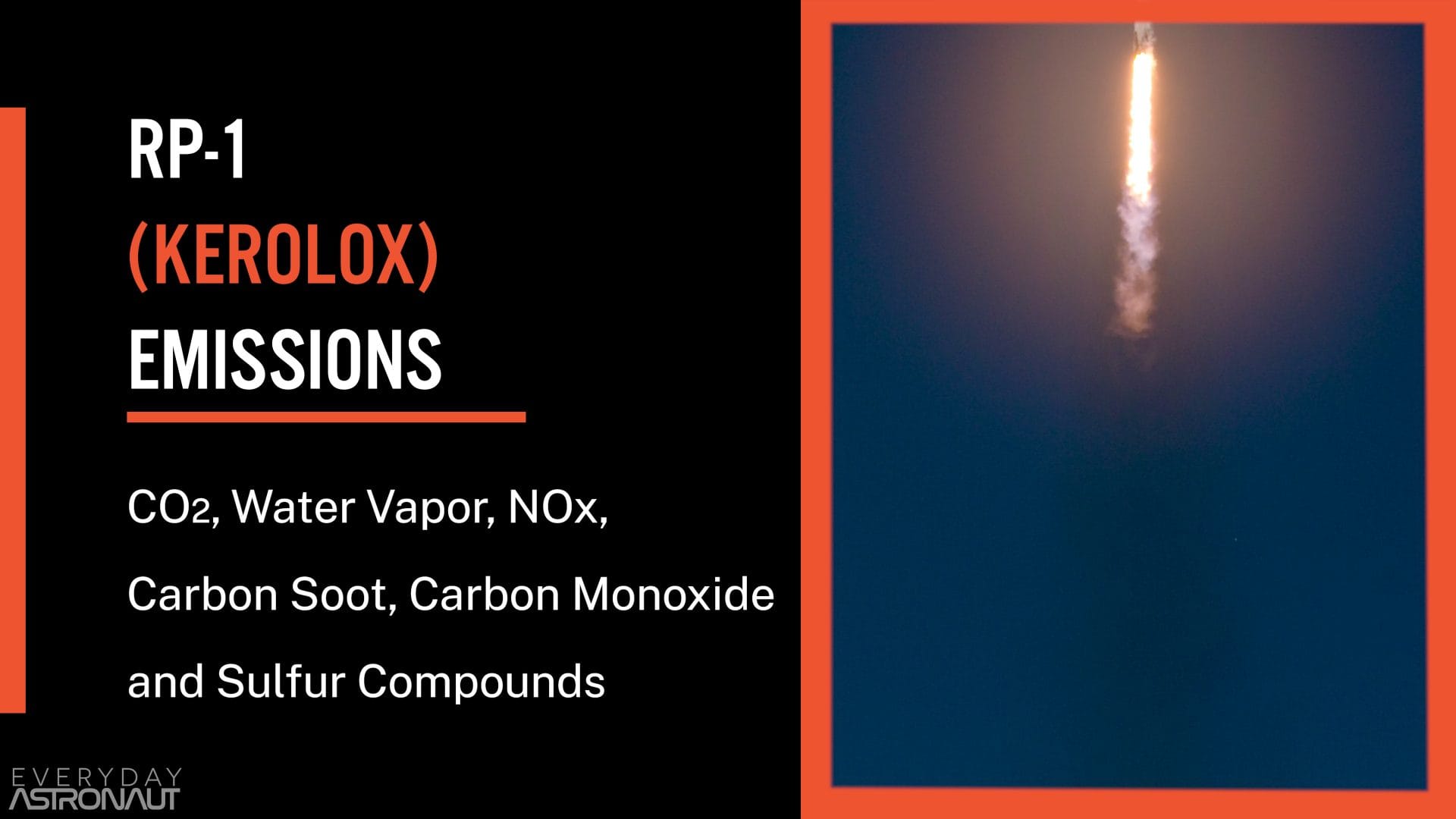
Next let’s look at a very common propellant which has been pretty prevalent throughout spaceflight, RP-1, again with liquid oxygen otherwise known as kerolox. The first stage of the Saturn V used RP-1, as well as the Falcon 9 and Falcon Heavy, the core stage of the Atlas V, Soyuz, and Rocket Lab’s Electron.
RP-1 is basically just a highly refined jet fuel, which in itself is just a highly refined kerosene. When burnt, RP-1 will produce CO2, water vapor, NOx, carbon soot, carbon monoxide which again mostly becomes CO2 and a little bit of sulfur compounds. The exhaust is kinda nasty but it is not that different from what a normal internal combustion car produces, just a whole lot of it at once.
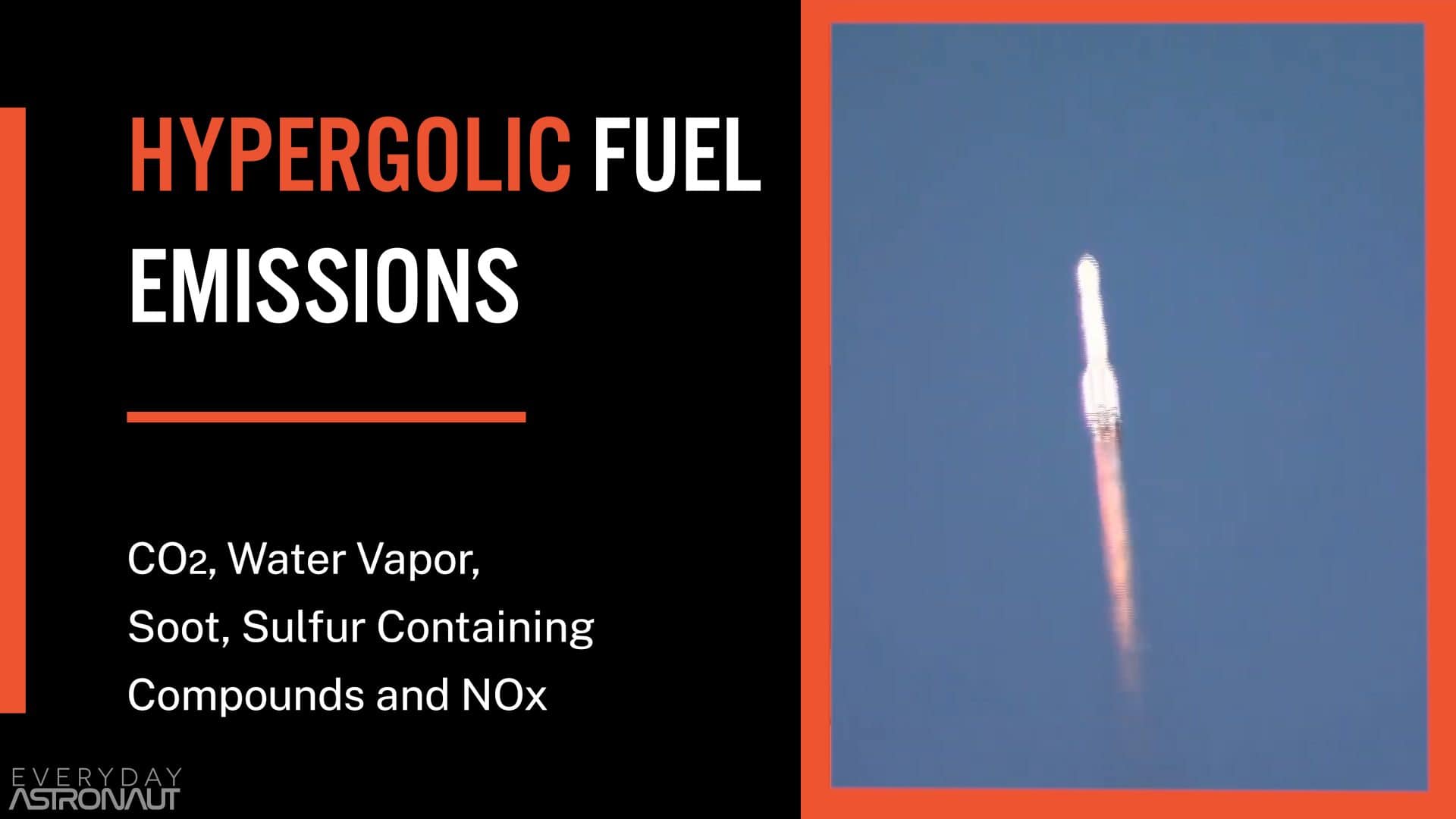
Speaking of nasty, let’s look at hypergolic fuels. Hypergolic fuels are those that will spontaneously combust when the fuel and oxidizer come in contact with each other. This helps make rockets reliable as you simplify the ignition sequence.
They are also very stable fuels at room temperature, which means you can fuel up a rocket and it will happily sit there ready to launch for long periods of time, which made hypergolic fuels a perfect choice for Titan missiles and other missiles that need to be able to launch quite literally at the push of a button.
But it is also used on the Proton rocket, the abort motors for SpaceX’s Crew Dragon Capsule and Boeing’s Starliner, and the Space Shuttle’s Orbital Maneuvering motors also used hypergolic fuels.
It is also very common in reaction control systems and long duration coast stages for those same reasons. Simple, reliable and stable.
But hypergolic fuels include hydrazine or one of it is relatives like monomethylhydrazine or unsymmetrical dimethylhydrazine which are extremely toxic. Breath too much of any of those in and you will likely not live to tell about it!
However, when burnt, hypergolics are actually pretty similar to RP-1, producing mostly CO2, water vapor, soot, sulfur containing compounds and a bit more nitrogen oxides than other fuels, since nitrogen is a compound found in the oxidizer, which is usually nitrogen tetroxide.

Lastly, let’s talk about the new kid on the block, methane, or (when burnt with liquid oxygen) methalox. Three of the newest rockets coming on line in the next couple years are all running methane: SpaceX’s Starship, Blue Origin’s New Glenn’s first stage and ULA’s Vulcan first stage.
Methalox is probably the next most clean after hydrogen, which makes sense since it is such a similar compound. So when burnt, methane just becomes CO2 and water vapor along with a bit of NOx as well.
This might be contrary to what you have heard. It is a common thing to talk about how the belching or farts of cows is just methane and how bad of a greenhouse gas that is. It is true, but that is because it is unburnt.
Methane in the atmosphere is a real powerful greenhouse gas, therefore it is actually better when it is burned and split into CO2 and H20, as far as greenhouse gases go.
HOW MUCH DO DIFFERENT ROCKETS EMIT?
So let’s see some real data on some real-world rockets. For this let’s look at a variety of rockets with a variety of different fuels and just take a look at how much of what each rocket produces.
Let’s compare the Titan II rocket which ran on Hypergolic Propellants, the Soyuz FG which runs on RP-1 and has a hypergolic upper stage, the Atlas V N22 which has two solid rocket boosters, an RP-1 fueled booster and a hydrogen powered upper stage, and the Falcon 9 which runs on RP-1.
Then let’s add the Delta IV Heavy which runs entirely on hydrogen, the Space Shuttle which ran on hydrogen and the two massive solid rocket boosters, the SLS or Space Launch System that is basically a scaled up Space Shuttle without the orbiter and runs on two even bigger solid rocket boosters and a massive hydrogen tank and hydrogen upper stage, and lastly Starship which will run entirely on methane.
Now you might notice a few things about these choices. First off, I chose these rockets because they are all rockets that have flown or will fly humans, well except for the Delta IV Heavy, but you will see why we wanted to talk about it in a second.
But also, you will notice this selection of rockets covers pretty much all fuel choices! Now I should note here, my numbers are pretty accurate, but even direct observational recordings of rocket exhaust gets confusing because of how the exhaust interacts with the ambient air.
There is a lot of things, like how carbon monoxide will almost immediately become carbon dioxide, or how the heat of the exhaust turns atmospheric nitrogen into nitrogen oxides.
Because of all of these variables, I have simplified the output by lumping together carbon monoxide and carbon dioxide into just carbon dioxide, all other carbon sources are lumped into “soot” and we have ignored the slight oxygen output.
In general we combined several sources and our own calculations to get a pretty accurate total of each vehicle. I would guess each rocket is within 5% or 10% accurate, which is good enough for comparative and relative purposes. But put a small mental “-ISH” behind these numbers.
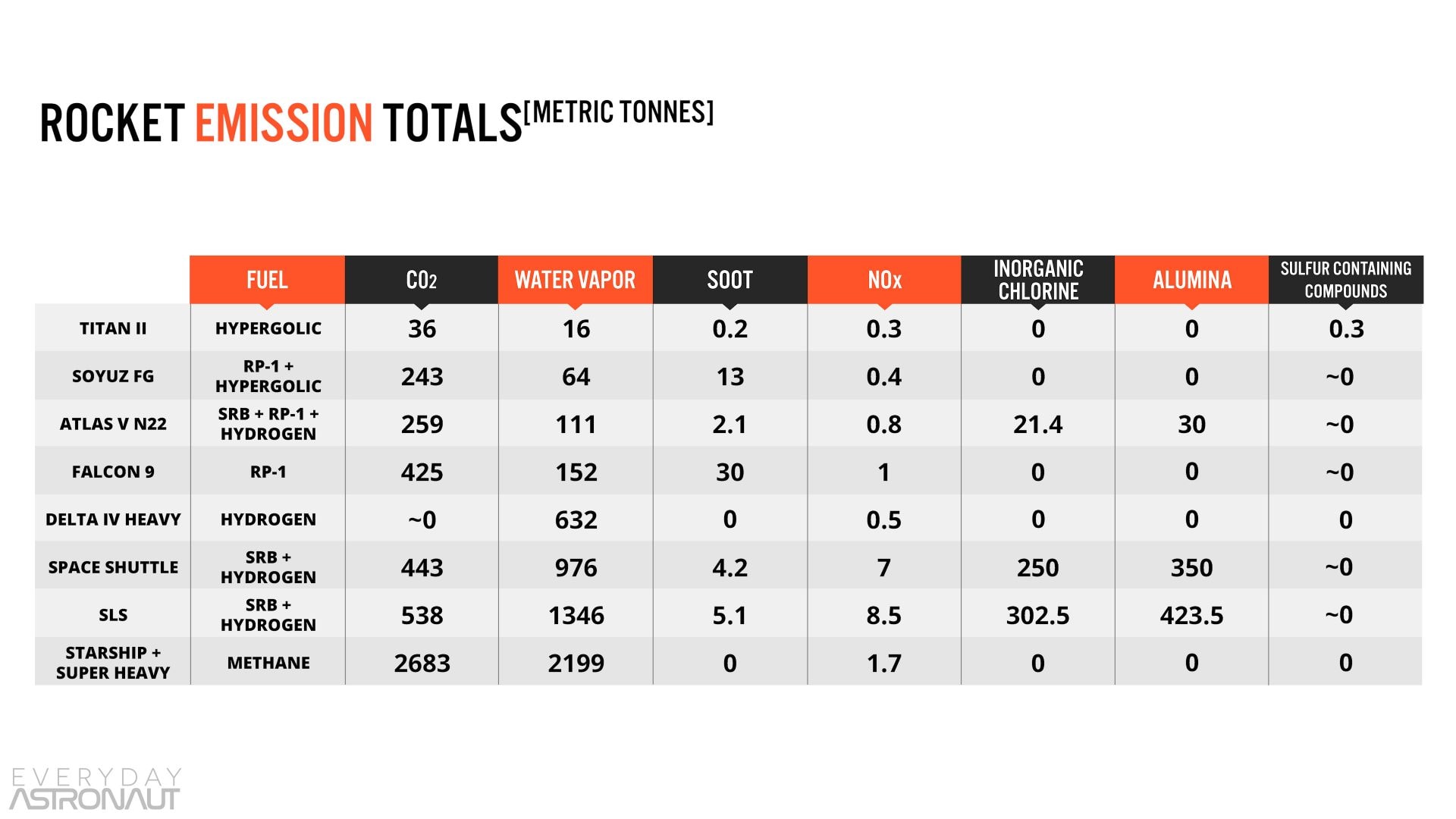
The hypergolic Titan II produced mostly CO2, then some water vapor, NOx, soot and sulfur.
The Soyuz FG and Atlas V N22 again produces mostly CO2, some water vapor, soot and NOx, but because the Atlas V uses those solid rocket boosters, we see a big jump in chlorine and alumina.
The Falcon 9 produces just about double what the Soyuz produces, and that makes sense since it burns about twice as much fuel. It should be noted that the Falcon 9 and Soyuz use RP-1 in the open cycle.
This means there is a gas generator that is very fuel rich so you will see much darker smoke coming out of the side as it has much less complete combustion in the pre-burner compared to the main engine.
It is likely the majority of the exhaust trail you see in the Falcon 9 is from the gas generators. Although all rocket engines do run fuel rich for the right balance of heat management and performance, so there is likely going to be unburnt fuel expelled regardless of the cycle type, but much more when it is an open cycle engine.
If you need a rundown on gas generators and the different types of engine cycles, be sure and read my Raptor article because I break down all of the different cycles to make them easy to comprehend!
The Delta IV is cool because it produces zero CO2, and just shoots out over 600 tonnes of water vapor, but as mentioned, it produces nitrogen oxides in the lower atmosphere and a small amount of carbon from its ablative nozzles, which causes its exhaust to glow orange instead of the clear blue-ish exhaust we see from the Space Shuttle Main Engines.
The Space Shuttle and its bigger wingless brother the SLS mainly produce CO2, a lot of water vapor, a little soot, NOx, and a lot of chlorine and alumina because of those massive solid rocket boosters.
Lastly, Starship will produce by far the most CO2 and water vapor, purely because of its immense size, and of course, some NOx.
It should be noted these numbers differ from what SpaceX published last year for their Starship environmental impact assessment, but they were likely worst case scenarios, and for a potentially larger rocket and our calculations are based on the 9 meter wide, 2019 Starship design.

But of course, just looking at their outputs does not tell the whole story: what about their payload capacity, this is a number that will vary drastically between vehicles. For this, let’s just look at their tonnes to LEO capability.
So for the Titan II we get 3.5 tonnes, the Soyuz FG with 7, the Atlas V at 13, the Falcon 9 at 15.5 while being reused like it pretty much always does now, but it should be noted, its expendable payload is a bit more at 22.8, the Delta IV Heavy at 29 tonnes, the Space Shuttle at 28 tonnes, the SLS quoted here is the Block 1 with 95 tonnes to LEO and lastly Starship will be the king of this group at 100 tonnes.
And now that we have all this up on screen, here is where the fun begins! We can really do some ratios here to truly see how much work each rocket performs compared to their emissions!
The Titan II was 10 tonnes of CO2 per tonne of payload to LEO, the Soyuz at 35, the Atlas V at 20, the Falcon 9 at 27 when reused or 19 when expendable, the Delta IV Heavy at zero, the Space Shuttle at 16, SLS at 6, and Starship at 27.
Next, let’s see their water vapor to LEO payload ratio. The Titan II produced 4 tonnes of H20 per tonne of payload to LEO, the Soyuz FG and the Atlas V N22 are 9 tonnes, the Falcon 9 is 10 tonnes when reused or 7 when expendable, the Delta IV Heavy produces 22 tonnes, the Space Shuttle 35 tonnes, the SLS will produce 14 tonnes and Starship 22 tonnes.
Lastly, let’s compare their ozone-depleting compounds, NOx, alumina and chlorine to their payload capacity. All the rockets without solid rocket boosters produce nearly zero tonnes per tonne to orbit, while the Atlas V N22 produces 4 tonnes, the space shuttle 21.7 and the SLS 7.7.
You might notice that the SLS here performs much better than the Space Shuttle in terms of emissions to payload capacity because the SLS has a much greater payload capacity than the Shuttle, mostly because the Shuttle had to lug the massive orbiter into orbit, which was not considered part of its actual payload capacity, and this is only the block 1 version of SLS which only has a small, less capable upper stage.
So things are interesting here aren’t they? Rockets really do not look like a very eco-friendly way to transport stuff, do they? That is an awful lot of stuff coming out the back per kg for everything but a purely hydrogen powered rocket.
But there is a lot of notes here. Here we go, tangent town! Of course, putting something into orbit requires an unbelievable amount of energy. So as we go forward, keep in mind, we are not talking about long haul trucking here, we are talking about accelerating huge payloads 10 times faster than a bullet!
You also may have heard me quoting what happens when you expend a Falcon 9 instead of reusing it and you might be tempted to think, “Oh wow, it emits quite a bit more per tonne of payload when you try and reuse it”.
Well, this is a topic we are not really going to talk about too much because it is a huge rabbit hole, but the manufacturing of a rocket is much worse for the environment than the launch itself.
But this is where I did not want to get into the weeds here. Because manufacturing of aluminum and steel is a whole different topic and it is in no way exclusive to rockets. If we want to debate the impact that manufacturing has on our planet, that is a whole different subject that I do not think we need to get into here, we are just focusing on the actual flight of the rocket.
But one fun note is that rockets could potentially be a solution to manufacturing pollution and CO2 emissions. In fact, Jeff Bezos, founder of Amazon and Blue Origin, paints a very interesting picture of what he thinks the future should look like.
In May 2019 during a speech about Blue Origin’s proposed Blue Moon lunar lander, Bezos shared his vision of using rockets to actually move energy production and heavy industry off Earth, keeping Earth as more of a sanctuary in the future.
I think this is actually a really cool concept and has almost nothing to do with this article. Sorry, but you should watch that speech because it is actually a compelling idea.
That being said, in the case of the Falcon 9, you are much better off reusing a rocket so you can amortize the pollution and carbon output of the manufacturing process over several flights and not just one flight.
I said I would not go down a rabbit hole, and here I am. We would also need to figure out how much the fleet of recovery vessels emit too before we really knew the total lifespan emissions of an expendable rocket compared to a reusable one.
But here is another note. A rocket running on hydrogen or methane can actually become mostly carbon neutral if the production of the fuels is powered by a renewable energy source.
Unfortunately most hydrogen is produced from fossil fuels by steam reforming natural gas, methane or coal gasification. When hydrogen is produced in this manner, it is not a very sustainable source of fuel.
But, hydrogen can be manufactured using electrolysis to extract it from water, although it is relatively inefficient, and you can actually create methane by just pulling carbon dioxide from the air and adding it to hydrogen using the Sabatier process.
This means you can actually extract the CO2 from the air that is emitted from the rocket – or anything really, and turn it right back into rocket fuel for your next flight. I know this sounds a bit obtuse. Isn’t it going to take a lot of energy to do that and therefore will just create more emissions?
Again, not if you run your fuel production off of renewable energy. This is something SpaceX will likely roll out as a cost effective way to not only fuel their Starships, but also practice this vital refueling process for Mars!
That is right, in order to get back from Mars, SpaceX will need to have this exact process down. So it will probably make an awful lot of sense for them to utilize the Sabatier process basically right away so they are experts at it by the time humans will rely on it to get home.
But it should be noted, if you are relying on Solar to refuel a Starship on Mars, it will require a lot of solar panels. And boy do I mean a lot.
Mars Society Founder and full blown Martian exploration evangelist, Robert Zubrin, told Elon Musk he is concerned about how much solar it would take to refuel a single Starship claiming it would need to be a solar field the size of 6 to 10 football fields! To that Elon said, “So be it!”
WHY ROCKET EMISSIONS ARE UNIQUE!
Now before we try and compare rockets to anything else, like airliners, we should probably talk about how rocket emissions have different effects at different altitudes.
Because rockets burn propellant in all layers of the atmosphere including the upper atmosphere, known as the stratosphere, and even beyond that, their effects can last a lot longer since they do not get cycled as quickly as down at sea level.
Seeing as CO2, soot and water vapor are greenhouse gases, the longer they are in the air, the more time they have to warm up our planet due to a process known as radiative forcing.
Water vapor in the lower atmosphere cycles really quickly into clouds and rain, and nature pretty much automatically regulates it no problem.
Although CO2 will not cycle as quickly or as easily as water vapor, it can eventually cycle out in the troposphere by becoming delicious tree food. But when you put any of these things really high up in the atmosphere, they stick around longer.
Water vapor is actually a much more powerful greenhouse gas than CO2. You can think of CO2 as more of the thermostat and water vapor as heater, kind of. But regardless, CO2 emissions in the stratosphere from rockets is not really that different than CO2 emissions in the troposphere or lower atmosphere.
But, carbon soot and alumina is what we should be most concerned about putting in the stratosphere instead of water vapor or CO2.
So rockets that have SRBs or RP-1 will produce a fair amount of soot and or alumina, and one study showed that they generate about 30 times more atmospheric heating or radiative forcing than a hydrolox rocket.
When it comes to emissions in the troposphere and stratosphere, altitude really matters. There are certain spots between the two layers where condensation can form, that greenhouse gases can have a much larger impact.
Researchers found that when planes fly in the conditions which make condensation trails, which is the right mix of altitude, humidity and temperature, those frozen ice cloud-like streaks in the sky actually trap a surprising amount of heat in our atmosphere.
One study published in February, 2020 by a group of researchers from the Imperial College London found minor changes in jetliners’ altitude can have DRASTIC changes on their emissions’ effects.
But, researchers all tend to agree they need to study this more to really accurately calculate and model the impact stratospheric emissions have because it is all very complex.
ROCKETS VS AIRLINERS
All this is starting to get pretty interesting. I think it is time we actually compare rockets to airliners and really get a sense for how bad rockets are, especially when used as transportation for carrying people!
We have thrown around a lot of numbers already. And there really has not been too much context for the numbers. But I just wanted to get it all out there so you know exactly what gets put into the air when a rocket launches.
So let’s do a little comparison of 6 different vehicles. Six very different vehicles. We are going to compare the three vehicles which can currently ferry astronauts to the ISS: the Falcon 9, the Atlas V N22 and the Soyuz. And then we will add Starship and two common airliners, the Boeing 747-8 and the Boeing 737-800.
The reason I chose these vehicles is because, again, they all carry passengers, and even more fun, the Falcon 9, Soyuz, the booster of the Atlas V and the two jets actually run on virtually the same fuel. The jets run on Jet-A jet fuel, which is again highly refined kerosene, while the rockets run on RP-1, which is an even higher refined kerosene.
The reason I put Starship in this mix is mostly because it is, A) freaking huge and for now represents a rocket with by far the worst case scenario for total emissions and, B) SpaceX actually wants to use it as a point to point transportation on Earth.
Therefore we will actually quote Starship in two configurations: Starship and Super Heavy for orbital space flight missions, and also just Starship for those Earth to Earth rapid transport that might directly compete with the airline industry someday.
One more note here, we first calculated the worst case scenario for airliners as if they flew full of fuel and had depleted all of their fuel each flight. But, it would be a really bad flight if your jet ran out of fuel, and jetliners actually only fill a little more than what is necessary for that route.
So that being said, we will take their maximum potential output as if their tanks were filled to the brim and divide it by half, since that is a better representation of the overall average amount of fuel used by these jetliners on medium and long haul routes, which would be competing with Starship.
Now because we can pretty fairly compare CO2 between rockets and airliners, let’s just focus on the CO2 output of all these vehicles. But we will want to keep in mind that rockets that emit carbon soot into the stratosphere are pretty bad, aka the Atlas V, Falcon 9 and Soyuz.
So this is all starting to get pretty interesting. I think it is time we actually compare rockets to airliners and really get a sense for how bad rockets are, especially when used as transportation for carrying people!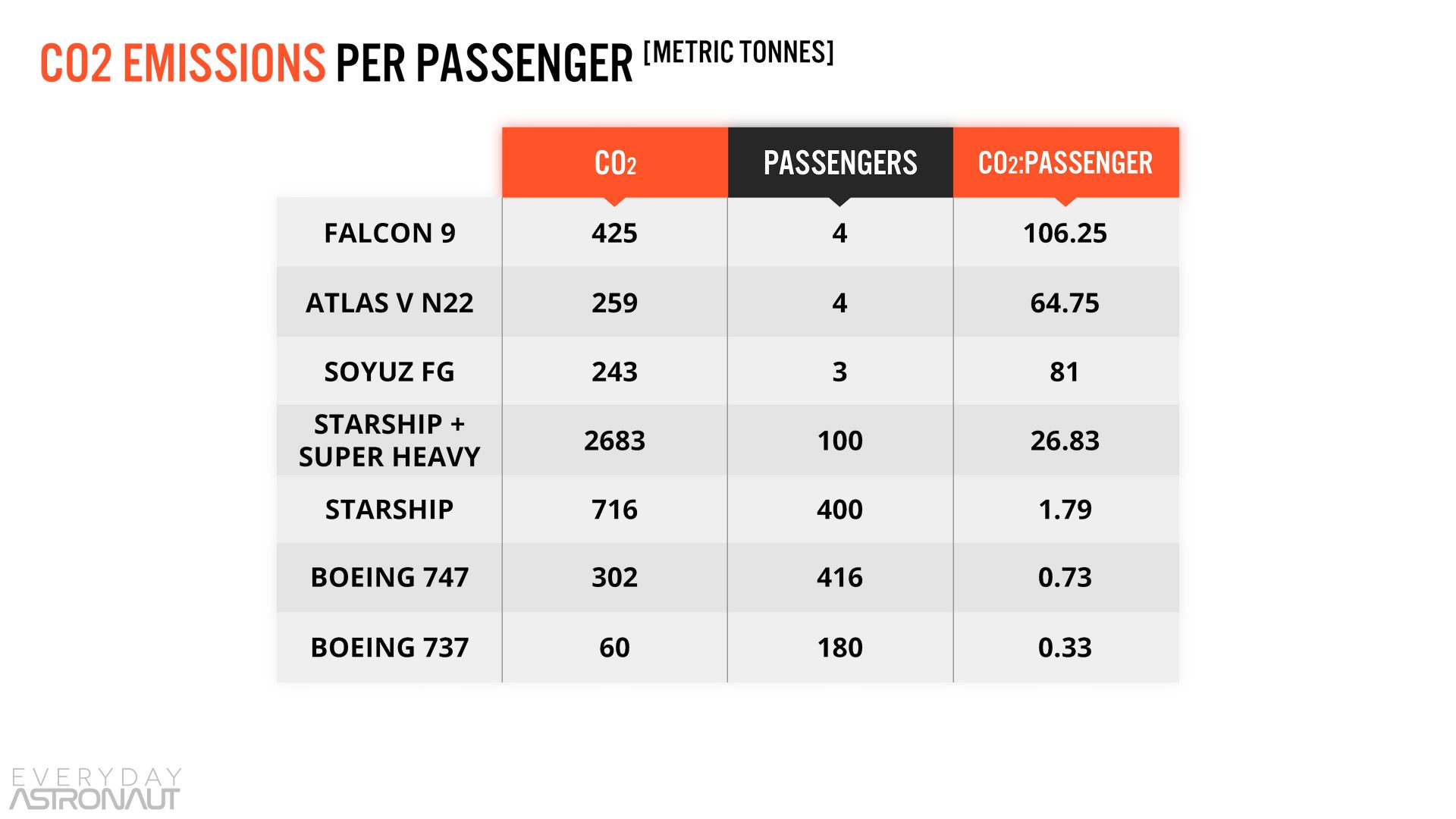
So again, the Falcon 9 releases 425 tonnes of CO2 per flight, the Atlas V 259 tonnes, the Soyuz 243 tonnes and Starship releases 2683 for the full stack and the Starship alone releases 716.
Compare that to a 747 at 302 tonnes of CO2 and 60 tonnes for the 737. Now remember, this has each jet using only half of its fuel per flight. So these could vary, but I figured this was a decent estimate of the average CO2 emission of each different route or how full the flight is etc etc.
So now, how about passengers? Falcon 9 can carry up to 4 passengers in a Crew Dragon, or that is the number we will almost certainly see. It was originally intended to carry 7, but NASA is only doing 4 and I do not think we will ever see more than that fly.
Starliner on the Atlas can carry 4, the Soyuz can carry 3, Starship can carry up to 100 passengers to LEO, and after refueling can take 100 people on long trips to the moon or even very long trips to Mars.
For Starship point to point we do not have an exact number, but considering there is almost 1,000 cubic meters of pressurized payload capacity, let’s just say 400 passengers should easily be comfortable for a 45 minute flight.
Compare that to the 747 which can hold up to 416 passengers and only 756 cubic meters of volume; you will realize 400 in a Starship for short durations was being quite conservative. And lastly, the 737 can carry up to 180 passengers.
So what about their ton of CO2 per passenger? Well here is where some of these rockets are not an ideal form of transportation, with the Soyuz at 81 tonnes of CO2 per passenger, the Atlas V at 64.75 per passenger and the Falcon 9 at 106.25 tonnes of CO2 per passenger per flight. Eek. But, do not forget, LEO and Dallas are very different destinations.
But now compare that to 26.83 tonnes on an orbital Starship with 100 people and you realize we can actually make some pretty drastic improvements to those per passenger numbers! And then just look at Starship doing suborbital trips with 400 people! It would come out to be only 1.79 tonnes per passenger. That is actually not that bad at all!
Compare that to a 747 at 0.73 tonnes per passenger, and the 737 is king here at only 0.33 tonnes per passenger. So Starship actually gets pretty close to a 747 as far as per-passenger CO2 emissions. On certain long haul routes with certain passenger loads, it might actually be very comparable.
Sure in general, it still could be over twice as bad, but it is at least not two orders of magnitude worse, like some of the other rockets.
But, do not forget, with carbon capture, that could actually null it out pretty much entirely! And that is something you just can not do with RP-1 or Jet A, although synthetic jet fuels are being worked on.
Now the real question. Could we ever get rockets to be as efficient as jetliners? You might be tempted to think that because rockets only burn fuel for a few minutes and then coast in the frictionless vacuum of space, could not it be a really efficient form of transportation?
Well, the problem lies in two main issues. One, a rocket has to counteract gravity. In order to fly, its first G of acceleration and force is sucked up by gravity by default. It has to create at least its own weight in thrust to just begin to leave the ground.
This is called gravity drag. So imagine if a rocket is accelerating at 1.1 G, the relative acceleration is only .1 G because gravity is pulling it back down with 1 G.
If you got that same rocket to accelerate at 2 G, you would essentially accomplish 10 times the amount of work because the relative acceleration is a full G on top of the 1 G pulling against the rocket.
This is something planes do not need to contend with. Their aerodynamic lift is what counters and overcomes gravity. Although this lift can induce drag, the engines do not really need to waste any of their energy directly counteracting gravity.
So planes can fly with a thrust to weight ratio much below 1 – although some fighter jets can and do have thrust to weight ratios beyond 1 to 1, and that rules.
The other issue is engine efficiency. Chemical rocket engines, although some are getting pretty efficient, can not really get much above 450 seconds of specific impulse in a vacuum, which is their measure of how much work you can do with X amount of fuel.
This is where jet engines have a huge advantage as their specific impulse is usually in the thousands. And they kind of get to cheat by using oxygen from the atmosphere and using the air as a reaction mass. So a jet engine can just simply do much more work with the same amount of fuel.
So despite a jet engine needing to run for hours and hours to cover a distance that a rocket can do in just a 7 minute burn of a rocket engine, a jet sips on much less fuel during that entire phase because of the wings providing lift and the jet engines being so efficient.
Whereas a rocket will need to consume much more fuel in a very short period of time to do the same amount of work. I mean just look at a rocket and a plane. A rocket is basically all fuel and a little payload, a plane is basically the opposite. That pretty much tells the whole story.
Which is definitely why the Skylon hybrid rocket plane concept would be pretty appealing, mixing the best of both worlds. While in the atmosphere its SABRE engine uses the oxygen from the air to perform an efficient air breathing cycle. It uses wings for lift while in the atmosphere too.
Once the atmosphere gets too thin for that process to work, the engine switches over to a closed loop system where it performs more like a traditional rocket engine. This would be a cool concept that could potentially help bridge the gap between rockets and jetliners.
I still need to do an updated version of my article about Single Stage to Orbit vehicles and debate whether or not we will actually ever see one fly. So stand by as that is an article I definitely want to redo!
ROCKET LAUNCHES VS AIRLINER FLIGHT TOTALS
So obviously this is not the full story. Assuming there is going to be as many flights of Starship as there are airliners is a significant leap!
I think it is time we actually look at how many launches there are per year and compare them to the number of flights per year in the airline industry.
In 2018 there were 114 orbital launch attempts, which was actually the most orbital launches in almost 30 years! The majority of launches came from China that year, with the US close behind and SpaceX alone making up the majority of the US launches.
In that same year, there were 37,800,000 commercial departures of aircraft. That is 331,579 times more flights than there were rocket launches.
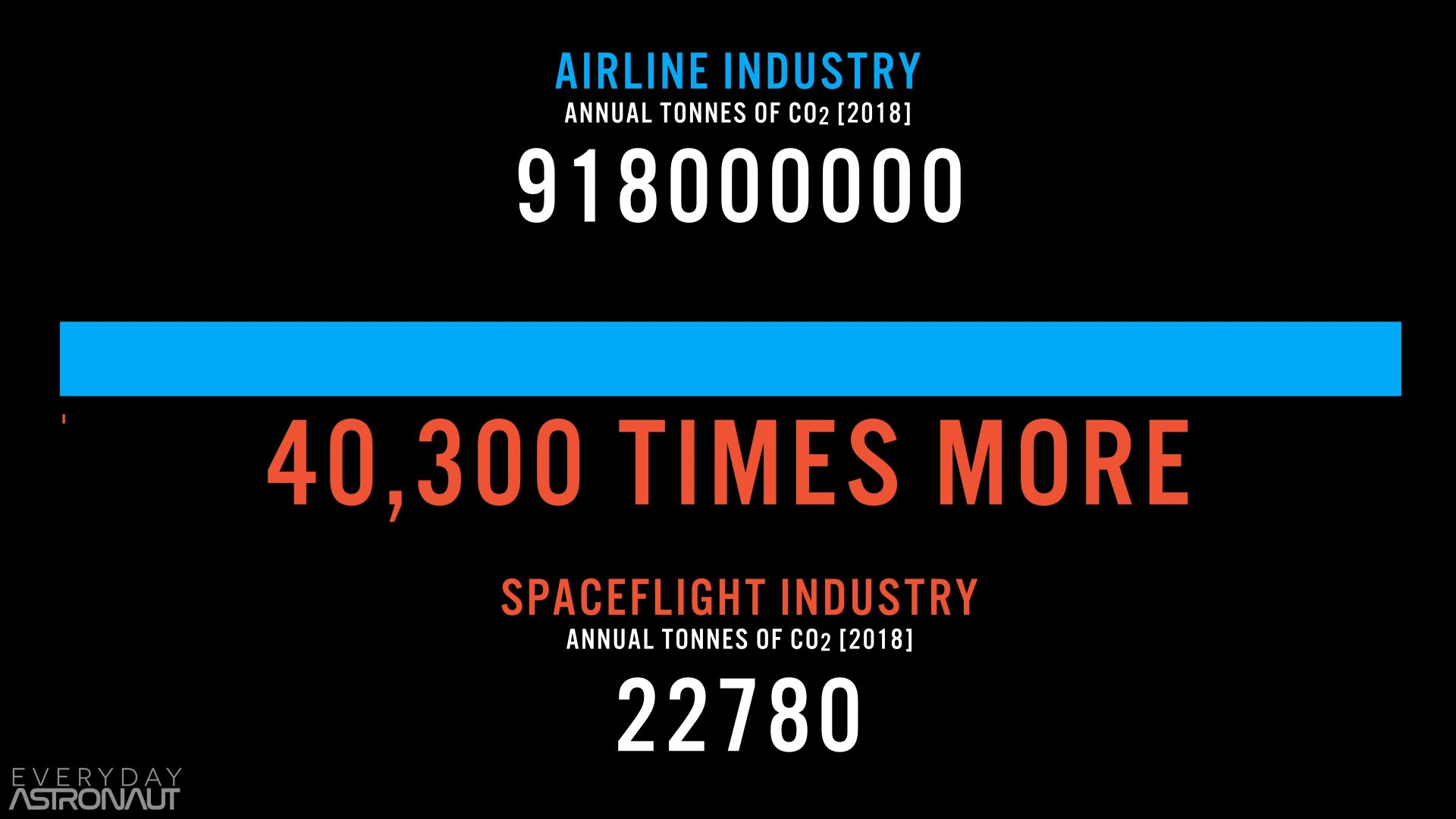
CO2 emissions from all commercial aviation in 2018 totaled 918,000,000 tonnes of CO2. Compare that to the 22,780 tonnes from the aerospace industry in that same year, and we realize that you would have to fly 40,300 times more rockets per year to equal the output of airliners.
That is 4,594,200 rocket launches a year, or 12,586 launches per day. And that is assuming the same ratio of dirty solids, hypergolic or kerolox rockets that we had in 2018, rather than the trend we are seeing towards cleaner methalox or hydrolox alternatives.
Although in 2018 with China launching the most, using lots of solids and hypergolic rockets and increasing their launch rates, it might be a bit before cleaner rockets outweigh the dirtier ones.
Ok, so we know what it would be like to continue launching fairly small rockets like those from 2018, with their modest CO2 outputs. Now how many Starship launches per day would there need to be to equal airliners?
The answer: 937 full stack Starship/Super Heavy launches or 3,512 Starship only point to point launches per day.
But let’s pause and remember that we still need to study the effects that water vapor and CO2 have in our stratosphere more in order to understand them better. But even if we find out they are an order of magnitude worse than we previously thought, we would still be launching an awful lot of mega rockets per day before it even begins to compare to even the airline industry.
There is one other big thing that rockets do that airliners do not do, and that is reenter the atmosphere. Believe it or not, the NOx that is formed during reentry can actually have a pretty bad effect on the ozone layer.
In fact, coming back in for reentry can be just as bad for the ozone as the ascent! If a vehicle like Starship were to fly 5,000 times a year, it would produce as much damage to the ozone as all meteorites during the same timeframe.
So if we did start to see Starship flying as often as an airliner, ozone depletion due to reentry and NOx emissions on ascent would certainly become a big concern that airlines don not really need to contend with.
ROCKETS VS EVERYTHING
And now I think it is time we put airliners into perspective, since we have been using them as the benchmark for CO2 emissions.

CO2 emissions from the airline industry were only 2.4% of global CO2 emissions!!! So that means in 2018, the global CO2 output of rockets was only 0.0000059% of all CO2 emissions. In other words, there are a lot bigger fish to fry.
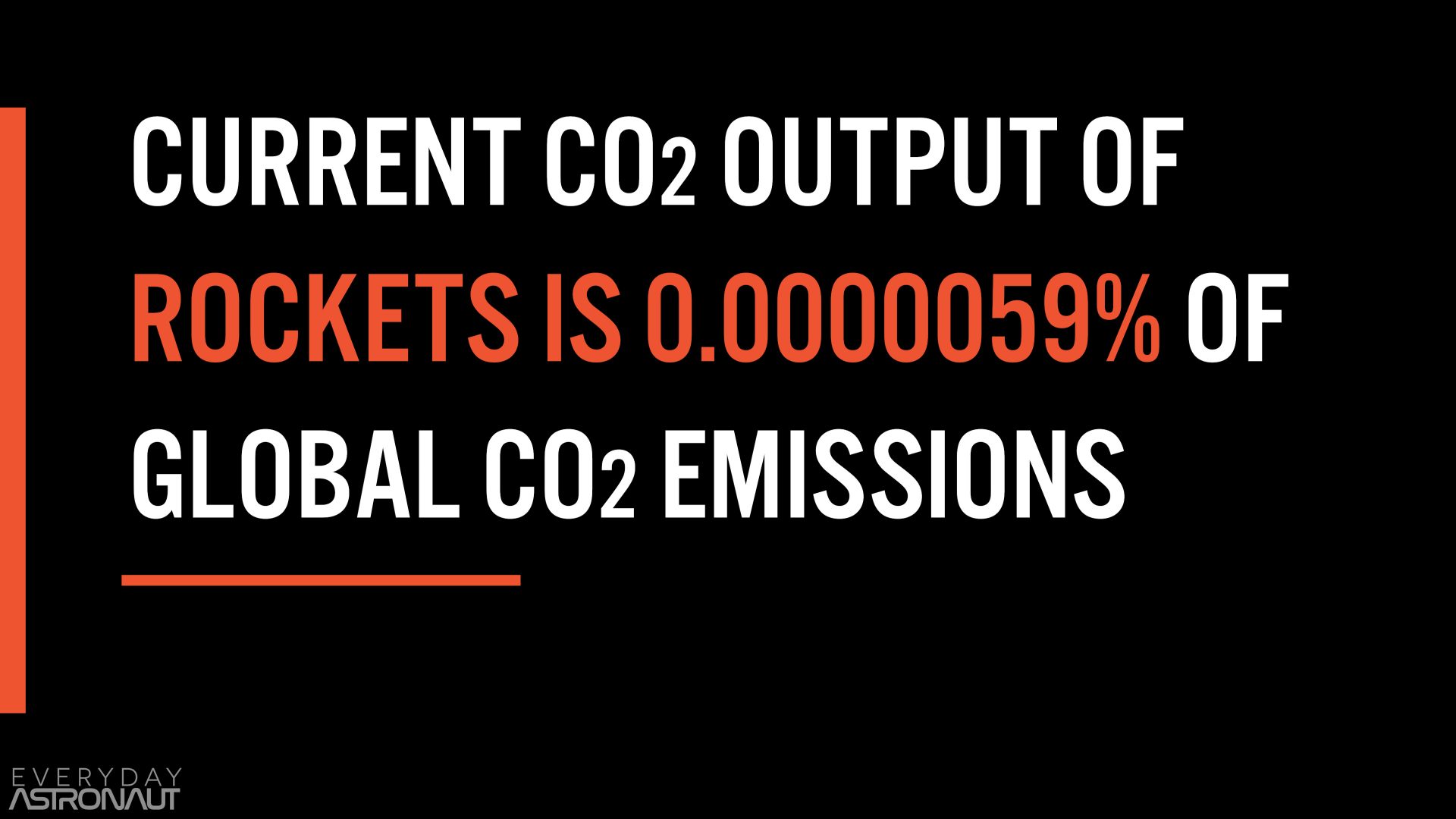
Worrying about the current CO2 output of rockets compared to the rest of the world’s contributors would be like worrying about and focusing on a single leaf in a forest fire. There are much worse offenders we should be focusing on.
Maybe here is something we should focus on before we worry about rockets. Two-stroke internal combustion engines, the small cheap engines that power leaf blowers, chain saws, lawn mowers and jet skis only burn about 70% of the gas you put into them cleanly – the rest becomes pollutants like carbon monoxide, nitrogen oxides and hydrocarbons.
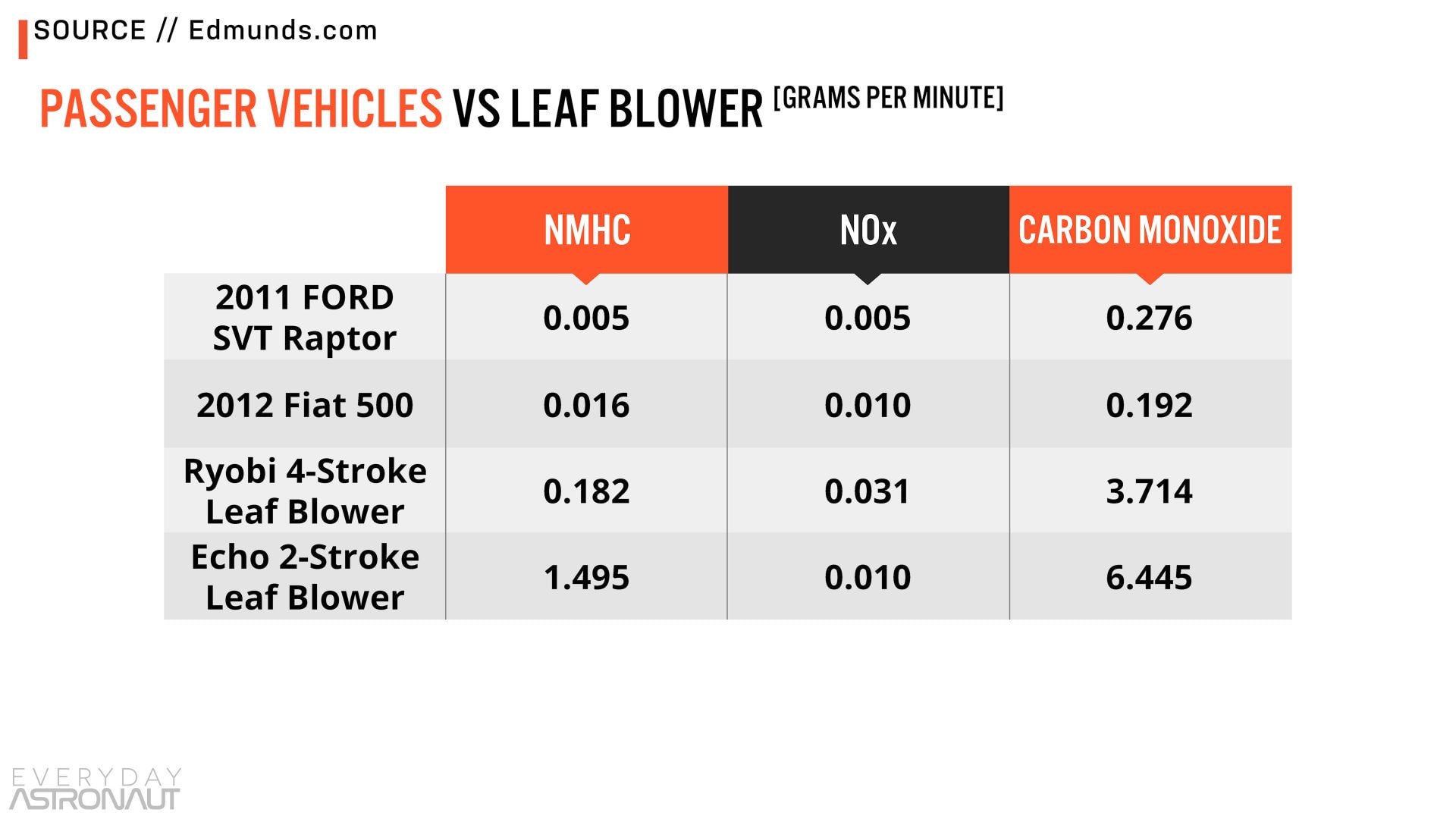
Tests found an Echo 2-stroke leaf blower is a horrible polluter, generating 23 times the CO and nearly 300 times more non-methane hydrocarbons (NMHC) than a Ford F-150 SVT Raptor.
To put that into perspective, the hydrocarbon emissions from a half-hour of yard work with the two-stroke leaf blower are about the same as a 2,000 km drive from the southern tip of Florida to Portland, Maine in a 2011 Ford F-150 SVT Raptor.
While we are talking about passenger vehicles, what about cruise ships? An average cruise ship emits about 150 tonnes of CO2 per day, and there are over 300 cruise ships operating on a nearly daily basis! And let’s not even get started on cargo ships!
And CO2 emissions are not the biggest concern of cruise ships and cargo ships. Their nitrogen oxides emissions and sulfur oxide emissions are horrible! Standing on the deck of a cruise ship has been measured to be as bad as standing in the middle of some of the most polluted cities in the world.
And as far as transportation goes, regular old cars and light duty vehicles on the road make up over 50% of the transportation industry’s global CO2 emissions. So let’s pretend Starship does end up launching and producing as much as the entire airline industry currently does, and it does not reduce demand on the airlines.
If we just reduced total car emissions by only 15% globally, forget semis, buses, trains, planes, shipping, JUST passenger cars, it would offset an entire Starship point to point fleet launching over 3,500 times a day!
Now I personally am guessing by the time Starship point to point is flying in a decade or two, cars will have made a much greater improvement in their total emissions. And if Elon Musk gets his way, the world will be transitioning to more sustainable cars sooner rather than later.
Also, we are still not even close to talking about the biggest polluters. Again, if we are worried about pollution or CO2 emissions, we have a lot bigger fish to fry. Rockets do not even begin to shift the scales, or make a blip on the radar of global emissions.
HOW CAN ROCKETS BE IMPROVED?
So rockets are just a tiny little drop in the grand scheme of emissions currently. But that does not mean we should just give them a pass, right? Should not every industry work on making improvements? So what steps can the aerospace industry take to actually make tangible improvements?
As far as each rocket goes, the most obvious thing is to stop using solid rocket boosters. SRBs are very bad for our environment, emitting nasty toxic compounds and depleting the ozone layer.
Then, moving away from hypergolic and fossil fuel based fuels like RP-1. That would be another good step. Utilizing either methane or hydrogen could be more sustainable, either by producing hydrogen from electrolysis, or by continuing that process and extracting CO2 from the atmosphere and making methane.
But further, the industry should be utilizing closed loop engines like the RD-180, the RS-25, the RD-181, the Raptor engine, and the BE-4, which will have more complete combustion and not pollute as much as an open cycle engine with a gas generator. Especially when burning RP-1.
Closed loop engines also tend to have higher specific impulse which means they can do more work with the same amount of fuel. Because it is kind of like a rocket’s gas mileage; improving that is a total win-win.
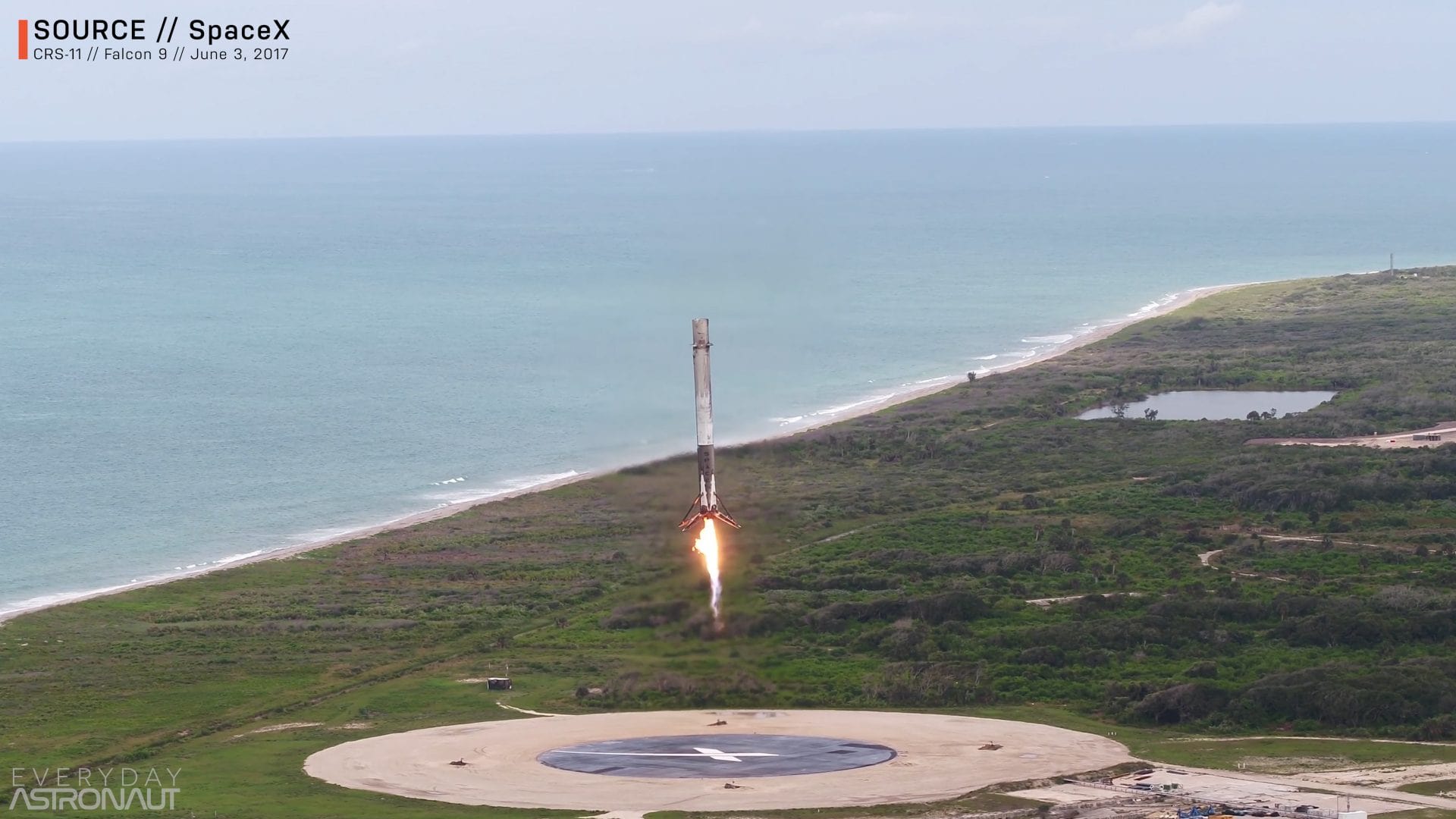
But perhaps the biggest thing by far would be to stop throwing rockets away. Again, as I mentioned briefly, the manufacturing of a rocket produces a lot of CO2 and pollution itself. We did not even get into the half of it.
As a matter of fact, manufacturing of steel is a huge global producer of CO2, which produces about 8% of global CO2 emissions. But using steel might be a better choice than using carbon composites, because you will produce a huge amount of CO2 in the production or in the autoclave when you cure it.
Because the manufacturing process produces all those emissions, when a rocket gets thrown away every single launch, we should be tacking on those emissions to the launch for the total output of the rocket.
If a rocket is reused over and over, you can spread out those manufacturing emissions over the lifetime of the rocket, which would greatly reduce the total emissions from the rocket more than any fuel change or engine choice ever could.
But as far as improving rockets, we should change fuels, change engines, and reuse them. It is really that simple. And of course, these are all trends in the aerospace industry anyway. So it is really a win : win.
Or perhaps we should all just plant a few billion trees. #teamtrees, sorry I am so late on that. But for real, now is probably just as good of a time to bring up the rear and plant a few more trees at teamtrees.org, because whether or not rockets are a big deal for our air, no one can argue that trees are not a good thing!
SUMMARY
So to summarize. How bad are rockets for our air and the climate? Compared to other forms of transportation, each rocket that launches is not great per se. You certainly would not want to ship simple packages via rockets, but the cost will always keep that off the table.
But compared to even a small player in CO2 emissions, like the airline industry, rockets currently do not even compare at all! We would need several orders of magnitude more launches to even begin to need to factor in their contributions compared to other industries.
So obviously, rockets are not ideal, but for now, they are all we’ve got. And it will be a very very long time before we need to worry about the environmental impact they have on our air quality – at least compared to quite frankly just about everything else.
Not to mention the possibility of potentially moving heavy industry off our planet using rockets, perhaps their mild emissions could be our planet‘s biggest savior.
And if it were not for rockets, we would not have the observation and data collecting satellites that can observe our planet and other worlds to further shape our knowledge about our place amongst the universe and our effect on our own little planet.
So what do you think? Do you think rockets are a horrible thing that we are irresponsibly launching all willy nilly? Do you think they are not that bad but we should definitely keep our eyes on their totals, or do you think it does not even matter at all because it is so insignificant! Let me know your thoughts in the comments below!
SPECIAL THANKS AND RESOURCES
Thanks to Lisa Stojanovski for lots of help researching and calculating. Also, thanks to Kennedy Space Center Visitor Complex for allowing me to shoot the intro in their awesome Rocket Garden. And thanks to Ryan Chylinski and Maryliz Bender of Cosmic Perspective for some additional help shooting and for some awesome launch pad footage. And thanks to Flo, Andy and Austin for helping me polish this video into an article.
If you want to help me continue to do what I do, please consider supporting by becoming a Patreon member! Patreon members gain access to our exclusive sub-Reddit, an exclusive Discord channel, they get bonus material AND exclusive live streams!
Our calculations and Methodology on the Total emissions of Rockets
CO2 Emissions from Commercial Aviation (2018)
Leaf Blowers Emissions Are Dirtier Than High Performance Pick Up Trucks
“Global atmospheric response to emissions from a proposed reusable space launch system”






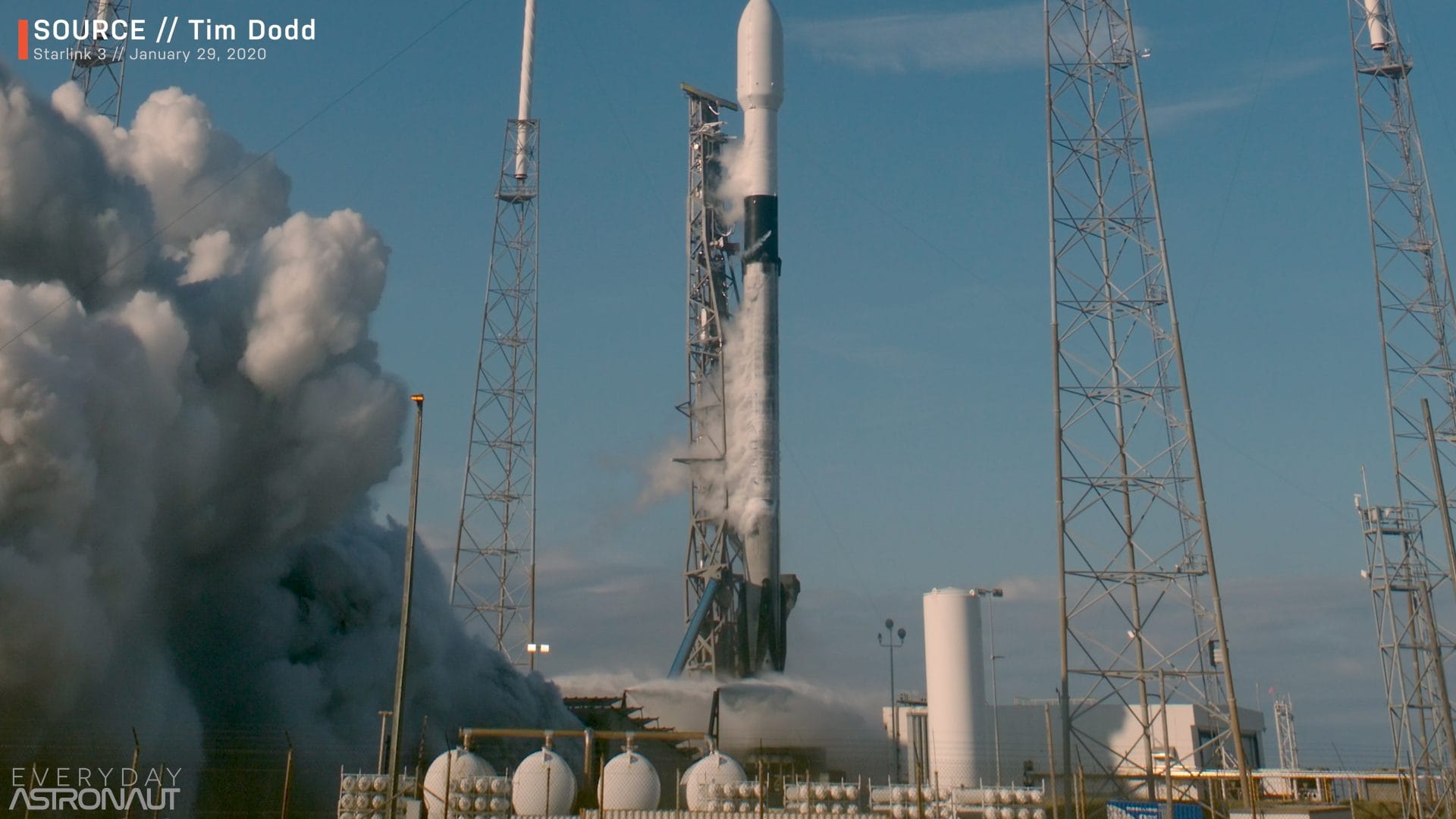
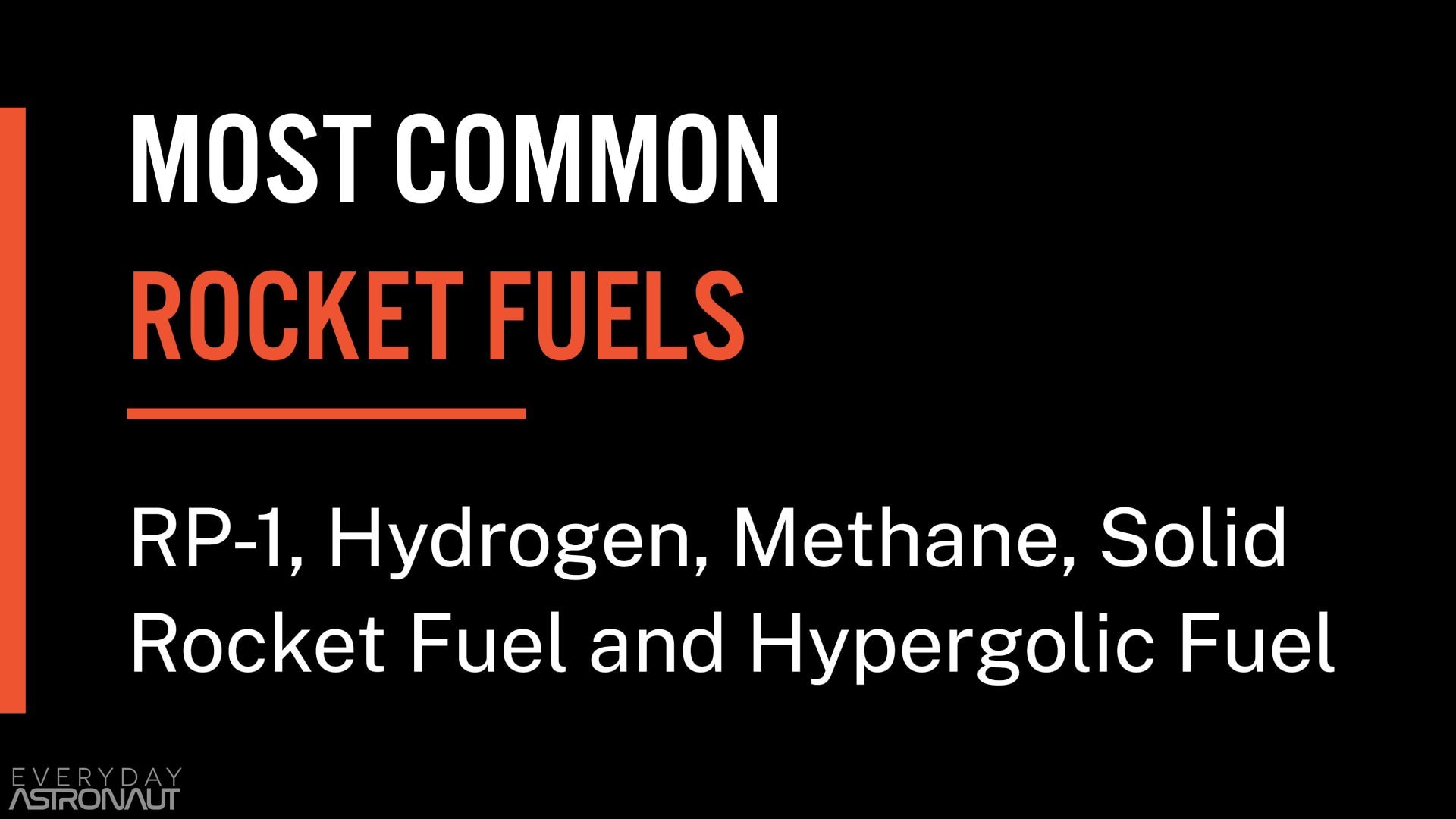
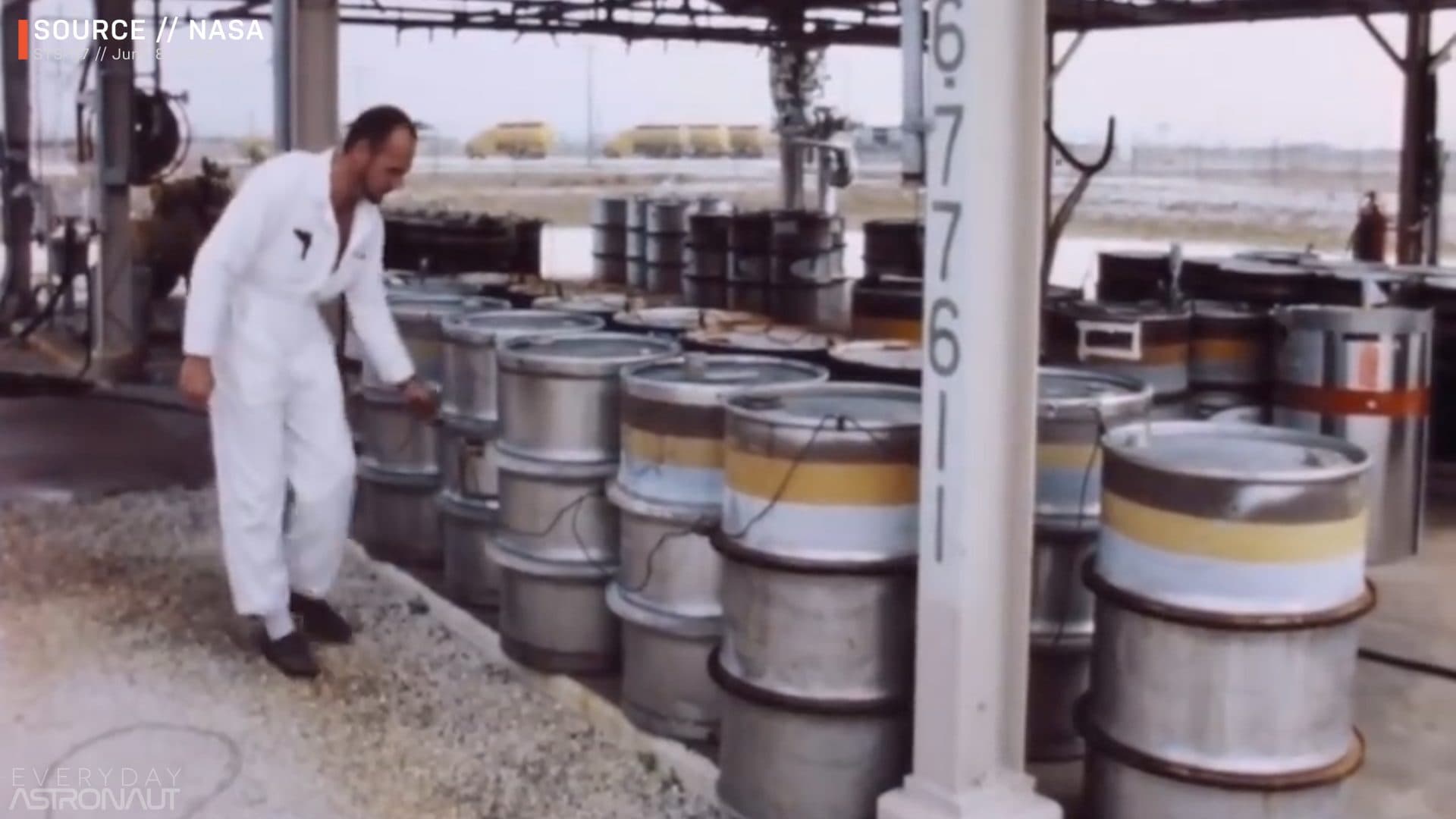
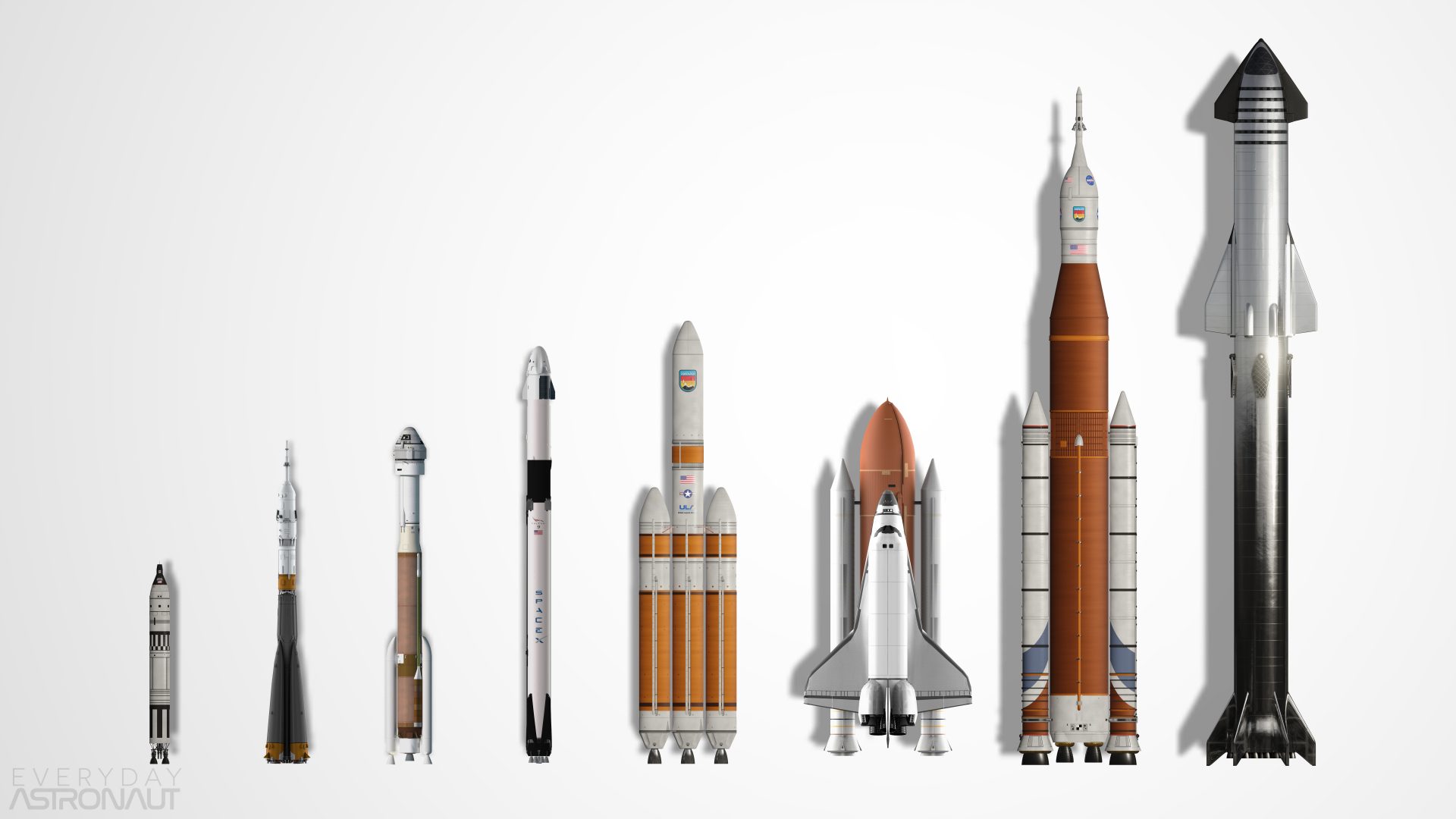
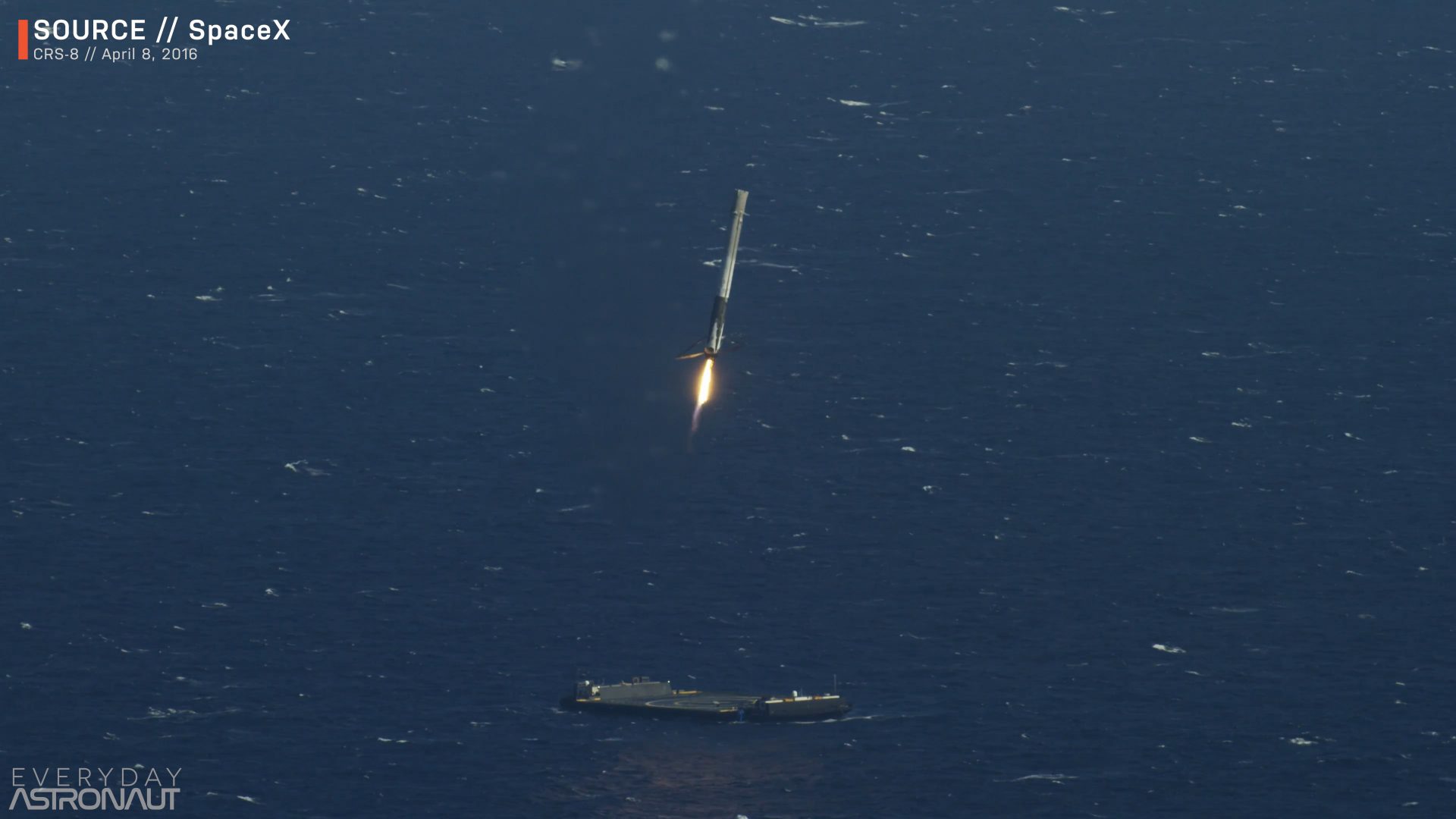




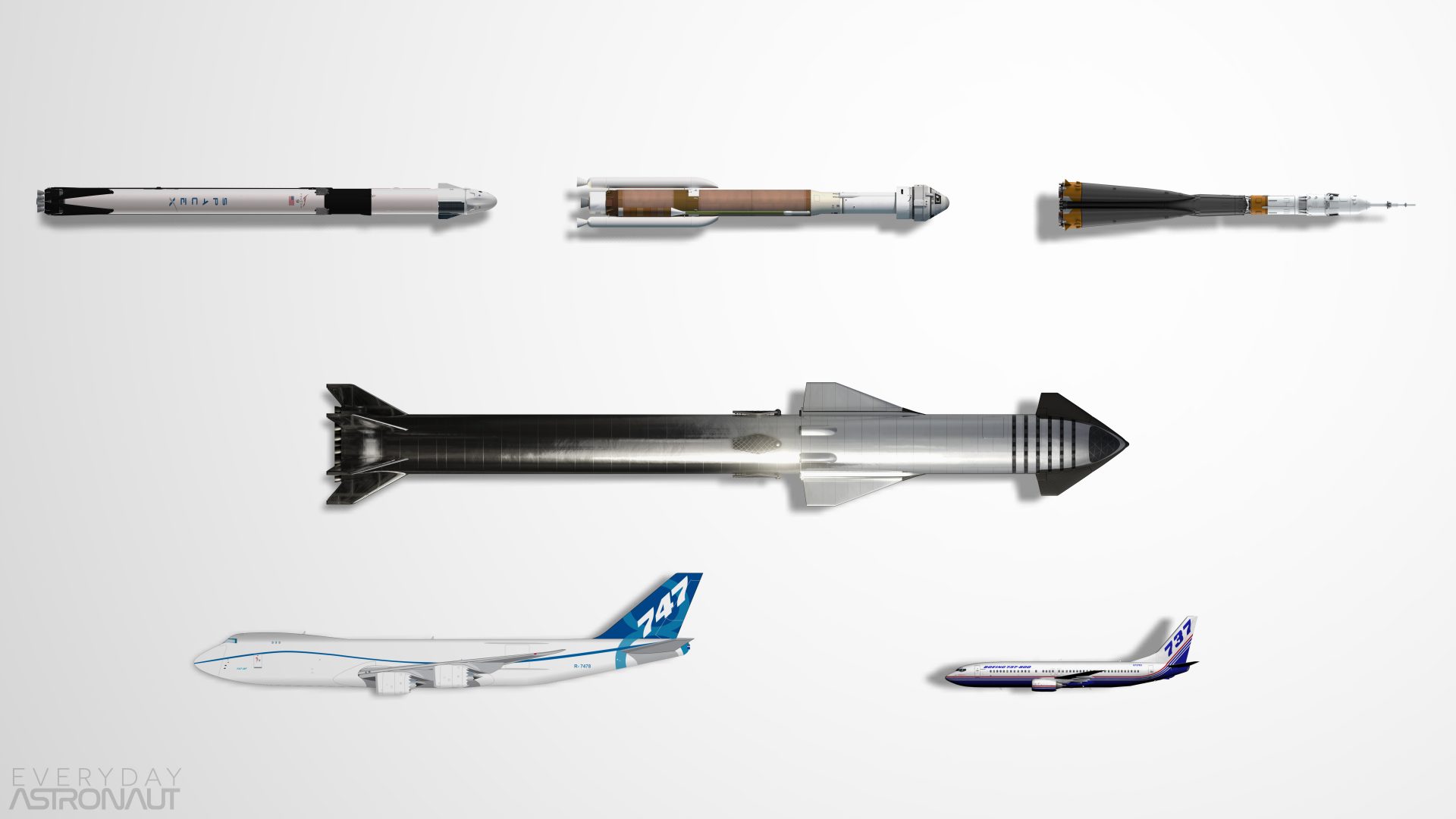


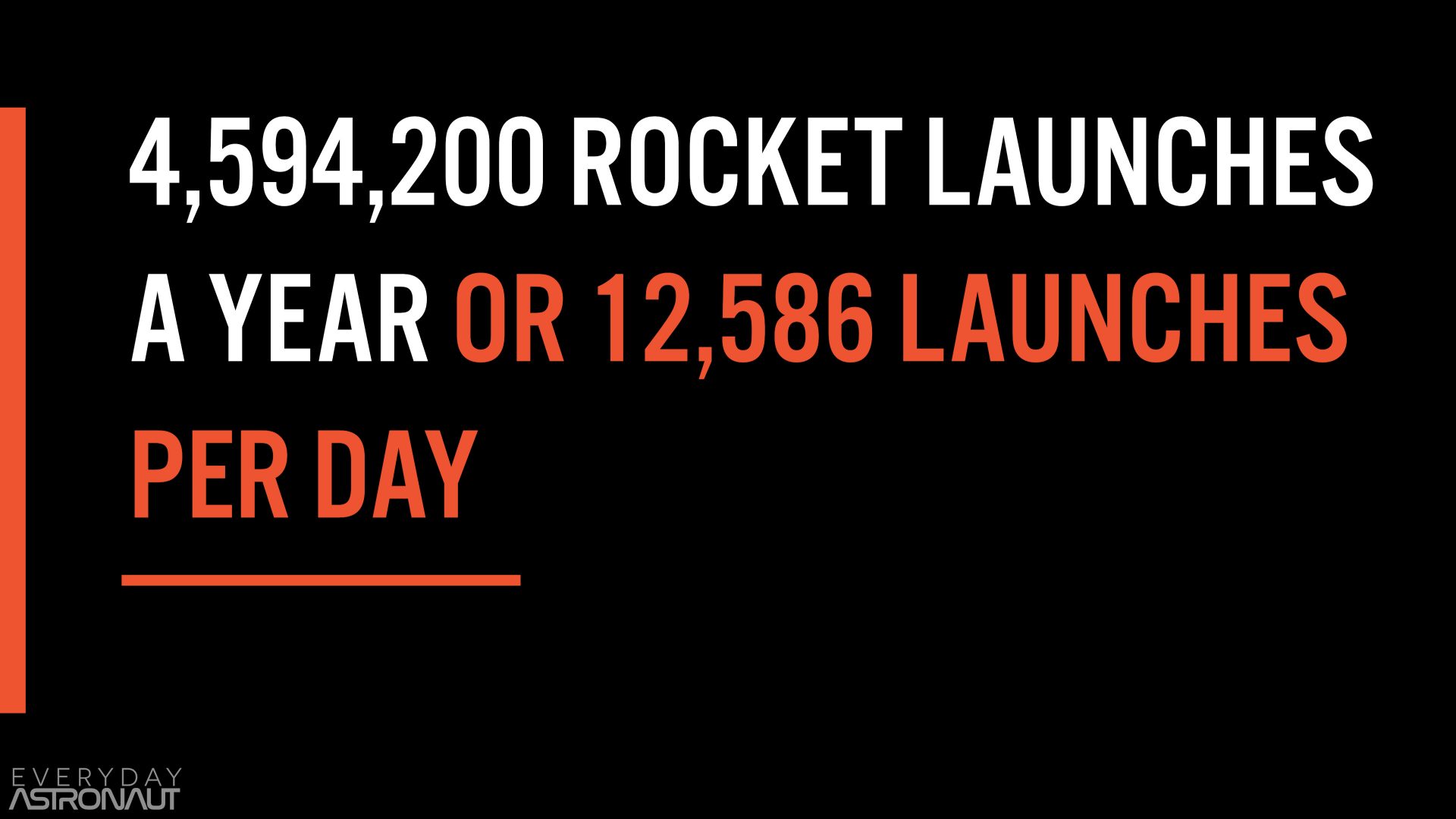


Amazing video, Tim! Keep up the good work
The first quarter of this was written so poorly I couldn’t continue.
Bear in mind that this is basically just a script for a youtube video, it’s much more user friendly to get this info by watching the video.
this helped so much thank you!
These article sources are what I live and breath, indoors, for. Wash your hands and read them all folks.
sure burning hydrogen is clean, but how were the giant takes of hydrogen produced in the first place? how much co2 was released during that process? it’s not like we tapped a natural spring of hydrogen to fill our rocket tanks.
Did you even read the article?
You can use renewable energy to produce hydrogen or methane..
Tim,
I would be nice if you play around and make a Kerbal video about a SpaceX Starship suborbital flight between New York and Sydney with 7 or 8 Raptors and 400 passengers.
Best wishes,
János
That’s exactly what I’m looking for for my chemistry science fair!
Thanks Tim for this incredible article~
Thanks. Researching this is very time consuming and not for the impatient like me. I skipped parts of the article and put my faith in your hands, but the overall idea that rocket pollution is worth the effects we obtain from putting useful things in orbit. It made me wonder how much direct pollution military rockets (which aren’t that useful to say the least) and wars in general produce. By direct pollution I mean just the environmental cost of running them, excluding manufacturing and fallout.
My compliments. Thank you for the great article. I think you did a thorough job given the breadth of the subject matter! I always wondered about this from my earliest days as a model rocketeer back in the ‘60’s all the way through my time at Wallops Station and ultimately “The Cape” working on the Apollo and Skylab Programs including later visits to watch Space Shuttle launches and now activity out of VAFB just south of me. Very informative.
Wow, amazing video. I wanna ask, what if we transport cargo by Starship instead cargo ships. Wouldn’t be it better?
great work! its good to know that even with current tech, increasing rocket launches thousandfold would barely register globally.
synthetic fuel (replacing RP-1 and jet fuel) does have the advantage of burning much cleaner, since it contains way less unwanted compounds. by using carbon captured from the atmosphere, they can be fully renewable. we got this if we want…
Hey Tim
I am currently writing a paper inspired by your video for university.
I calculated the total CO2 emissions to be 0.00012% of the anual global emissions in 2019. Meanwhile you calculated 0.0000059%
I know that my numbers probably aren’t that acurate as your’s, I just took your number of 425 t of CO2 per Falcon 9 launch and multiplied it by the number of launches in 2019 (97) to get a rough estimate of the total emissions and then divided it by the global emissions (33.3 GT), but I think there still should be a discrepancy of a factor of 21.
How did you come up with your value of 0.0000059%?
Also don’t worry the numbers in my paper don’t need to be accurate, it’s more about geting an idea of the scale of it.
Not all rocket launches are Falcon 9’s.
I really love these article-versions of the videos. When you get flooded with information like in your videos, it’s oftentimes hard to remember what you even said 5 sentences ago but with the written version you can really digest the information at your own pace. Please keep up the great work!
I always like reading along his video on another screen if I feel overwhelmed.
That’s a really good video! A shame I can’t use it as a reference in my academic work but it gave me a lot of nice directions to explore myself! Really enjoyed it! Very nice and rich blog/website!
Dear friend, both video and text are great job, however, some numbers are not correct.
Methane rockets, e.g. Starship + SH will produce far different mass of CO2. You forgot the fact, that real combustion ratio is 3.55. It is because it must be shortage of O2 in mix, to protect motor components against burning in contact with hot propellant. Fortunately, missing O2 don´t mean that some methane will remain in exhaust, but CO will remain. So the vehicle will produce less CO2 than you wrote, only 1552 tons. Remaining carbon will produce 777 tons of CO, which is poisonous, but it doesn’t matter too much. Birds will be baked faster than poisoned, after all. Well, CO is not greenhouse gas – still O.K., but it reacts to three gases: CO2 (in lower altitudes), ozone – still so-so O.K., and finally to methane. I am sorry I don’t know how much, but say, one third of CO, which can produce 148 tons of methane. Methane is at least 20 times stronger greenhouse gas than CO2, so it is equivalent of 3000 tons of CO2. All together direct CO + equivalent CO = 4500 tons. Still O.K. I think, but … different number.
BTW, I don’t think that passengers will be very happy with acceleration / deceleration 4 – 6 g. Military pilots are fine, but top managers? Hehe. O.K. you can reduce acceleration if you will burn more propellant, but deceleration will be true issue. The ship reentry will start slowly, but when it will slow down, it will quickly fall deeper to denser air, and then it will decelerate pretty fast. Next, rotating seats will need much more space than usual seats in plane. Howewer, it is all marginal compared to RELIABILITY. NASA can accept risk such as 1:250 now, I trust that it may be increased to 500, maybe even more, but air transport has 1:100,000 including onboard bombs, shooting down and so, and 1:500,000 if we will talk only about technical failures. It is very different number.
Amazing article, thank you for all the information. Anyway, I think there could be an error in the numbers. 22,780 / 918,000,000 is 0.00002481. multiplied by 0.024 (for the 2,4%) is 0.000 000 595, which in percentage is 0.0000595% four zeros instead of five to the right of the decimal point. Surely is irrelevant, or a typo, or maybe I’m wrong, but this numbers are propagating to other pages so is worth checking them out. Thanks.
Again, great article.
Cheers.
Thanks for great article.
Can you help me with an experiment for my science fair project?
basically we are füked, when a jerk has an idea, he has to create the conditions for this idea to occur, this is called thermodynamics, all the wheels that turn, the manufacture and all the little people (thousands of car drivers that didn’t have cars before the rocket plan, and bought cars to travel to Elon country) make a soup of unimaginable pollution, the end.
One aspect of pollution that you don’t seem to have considered is the amount of fuel released from venting during testing and fueling operations, and after landing on recoverable rockets.
Since fuels are generally more polluting than their combustion products this may actually be significant.
very clear and good article easy to understand. Thank you